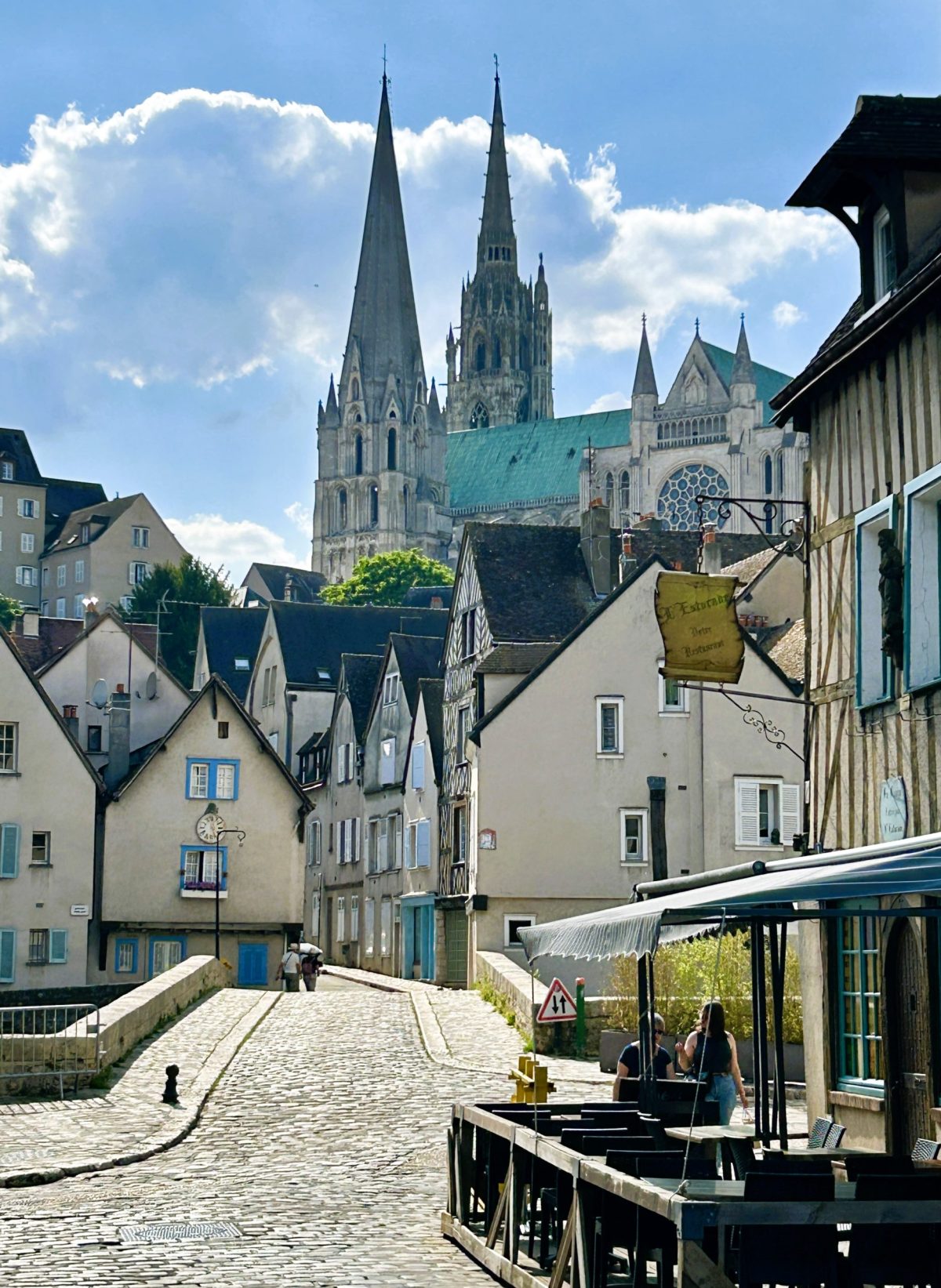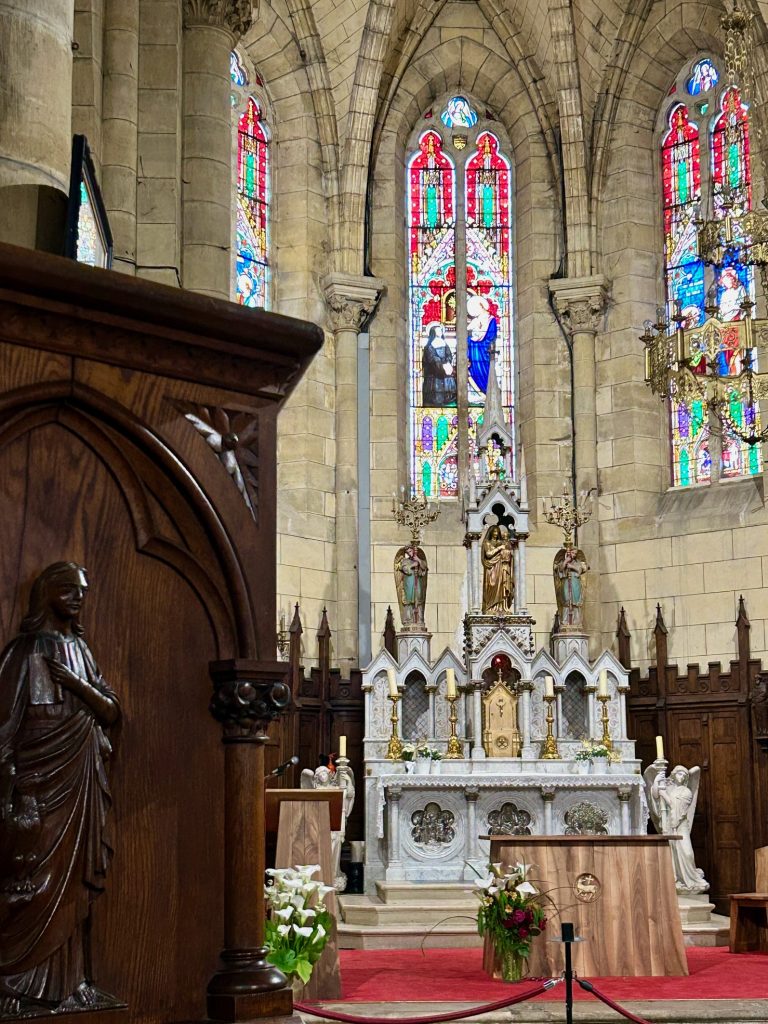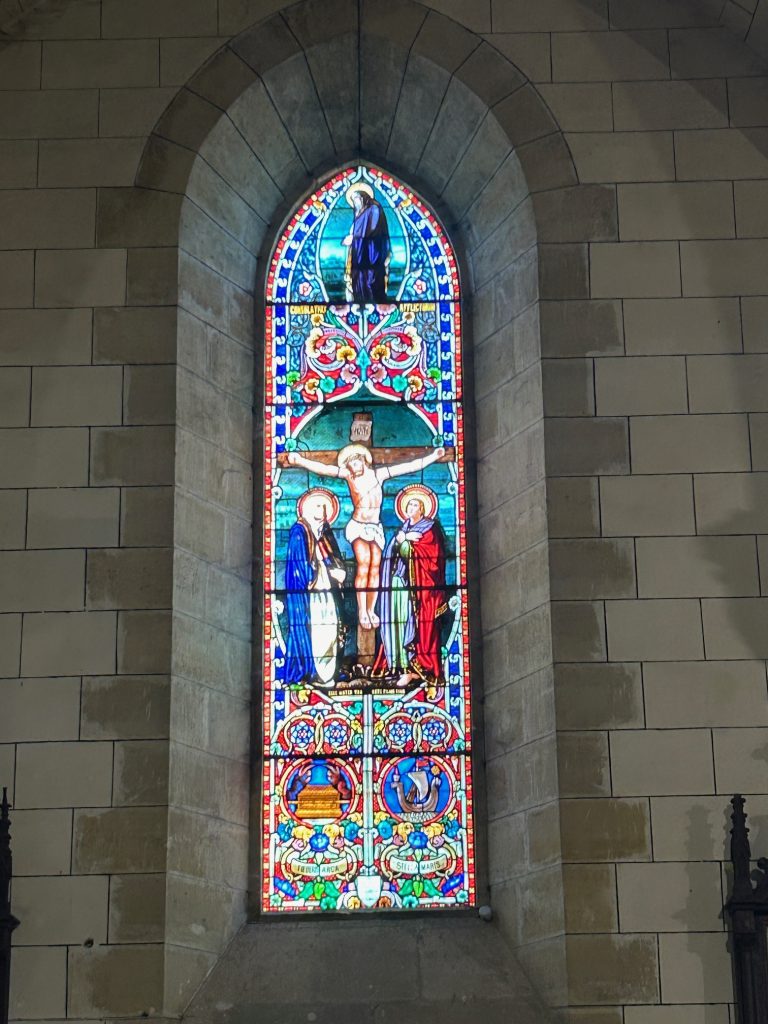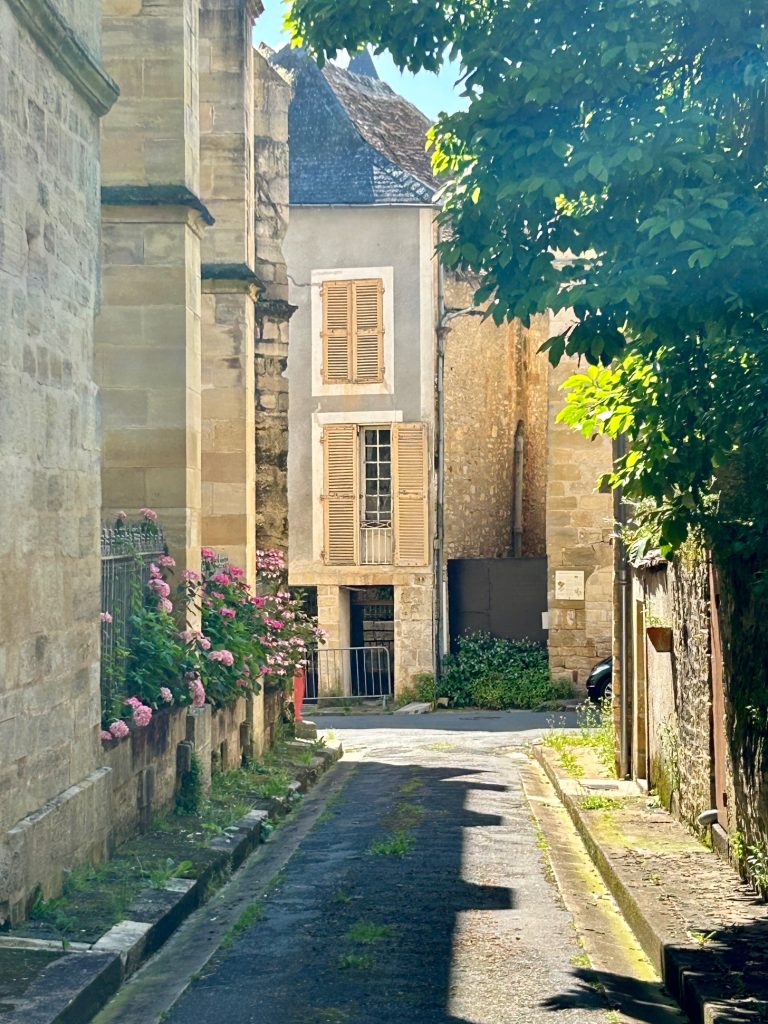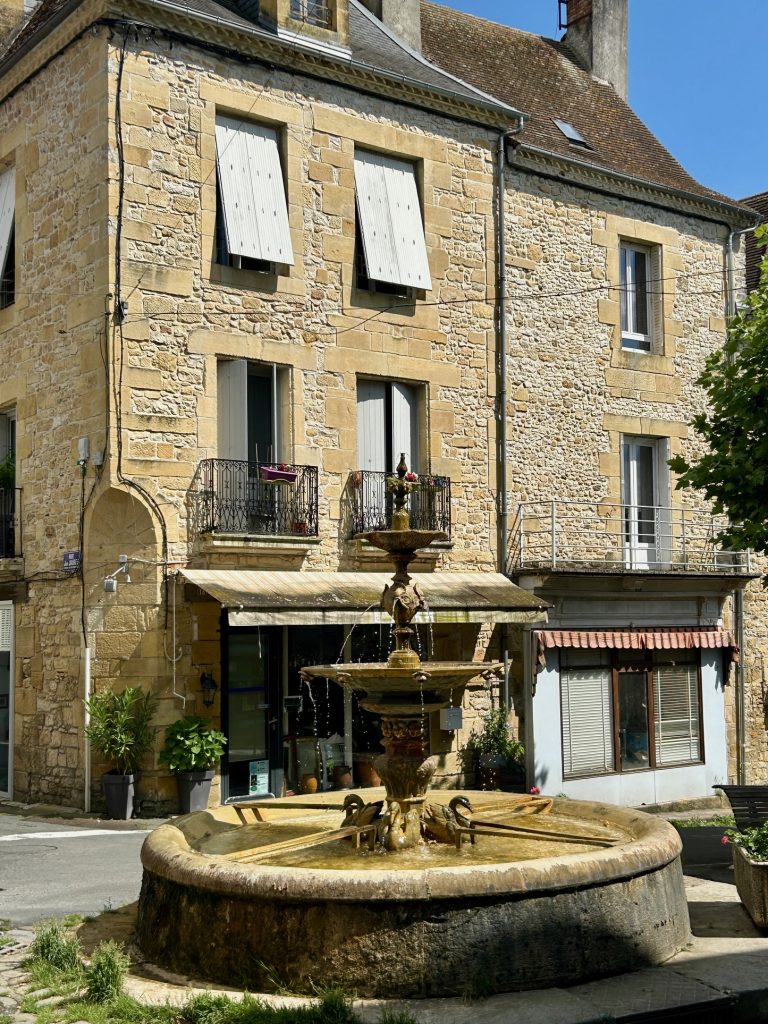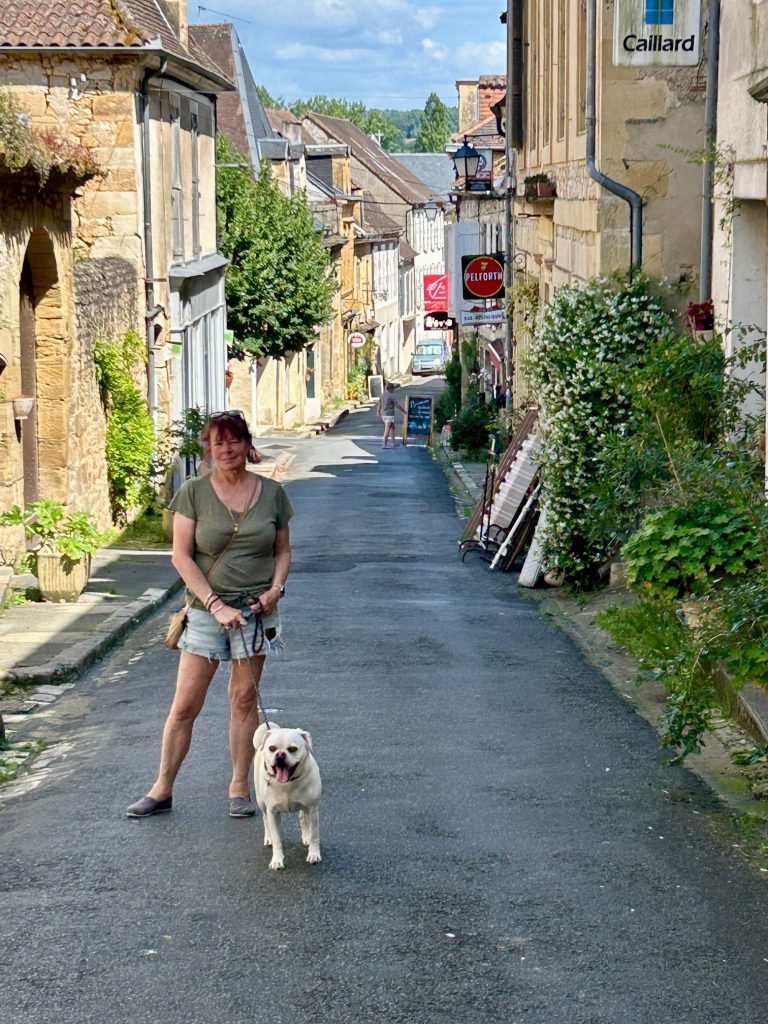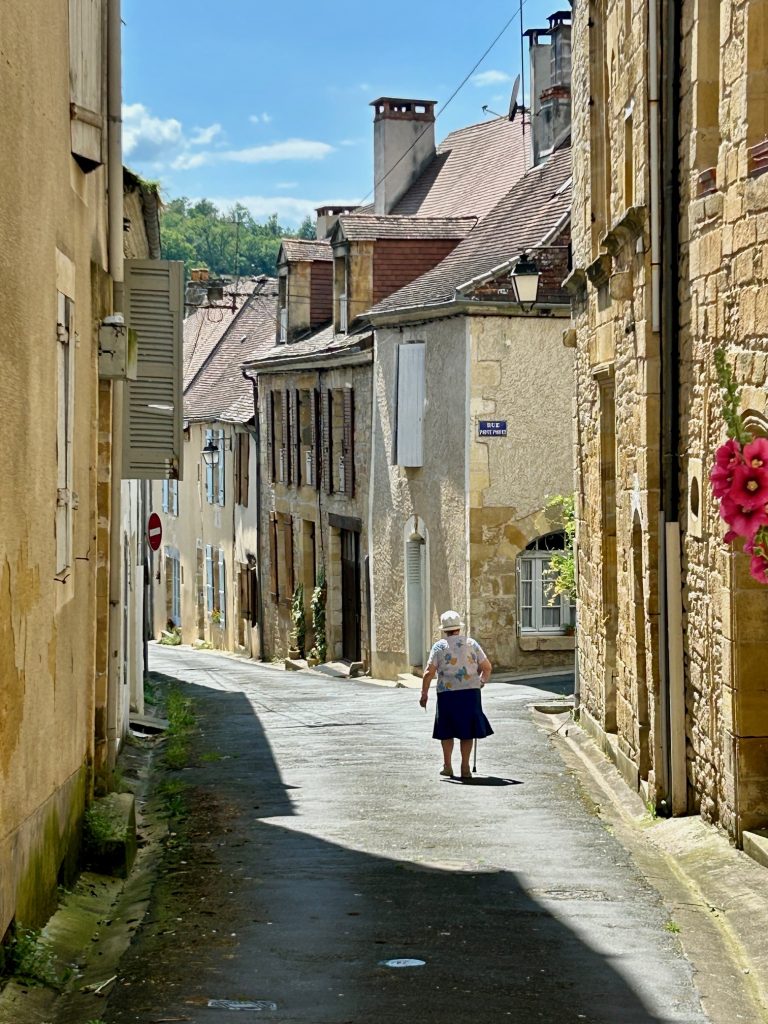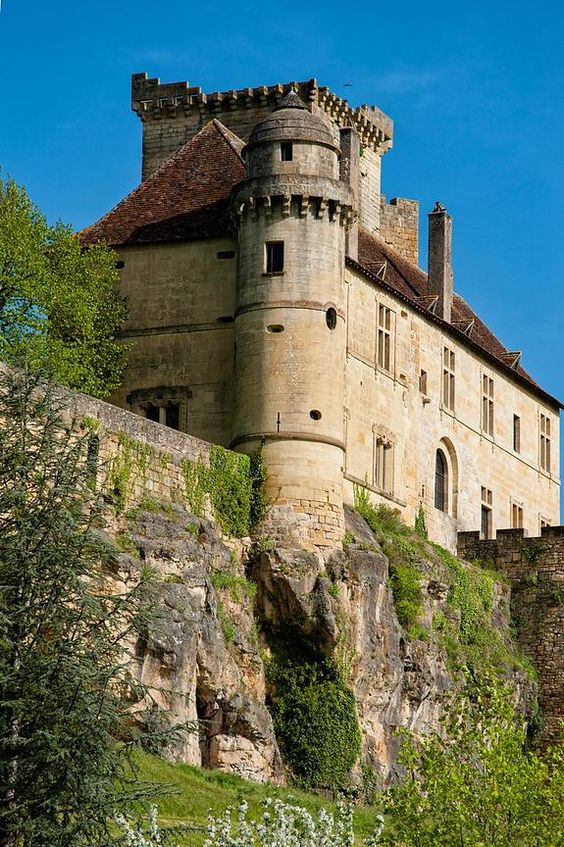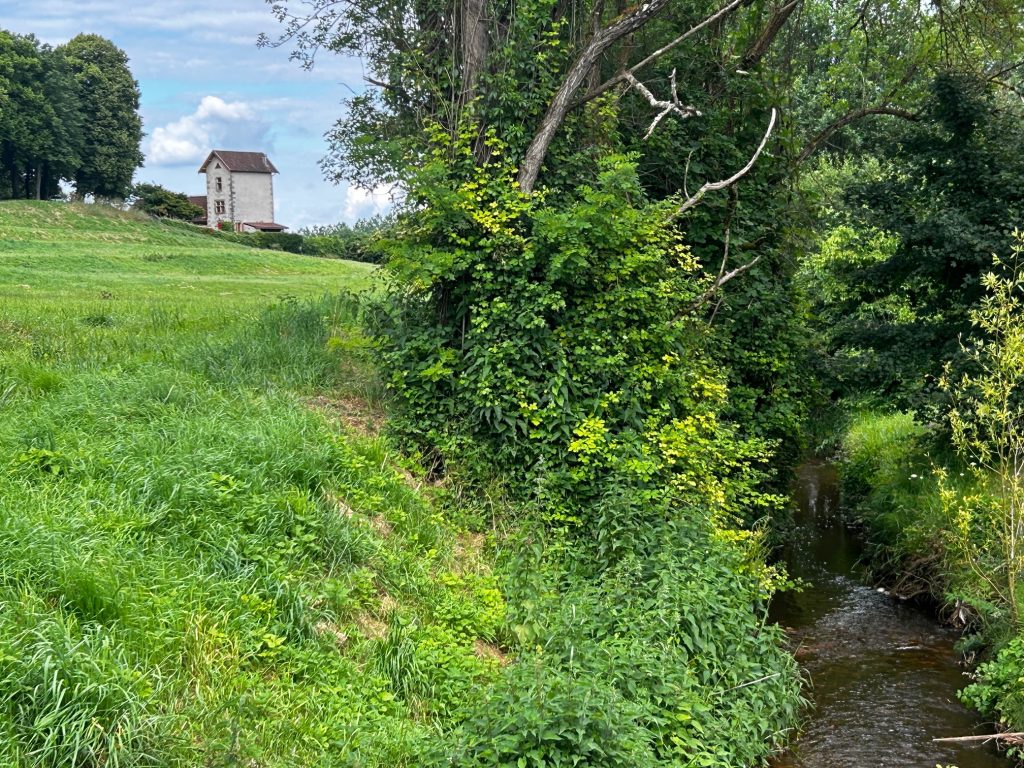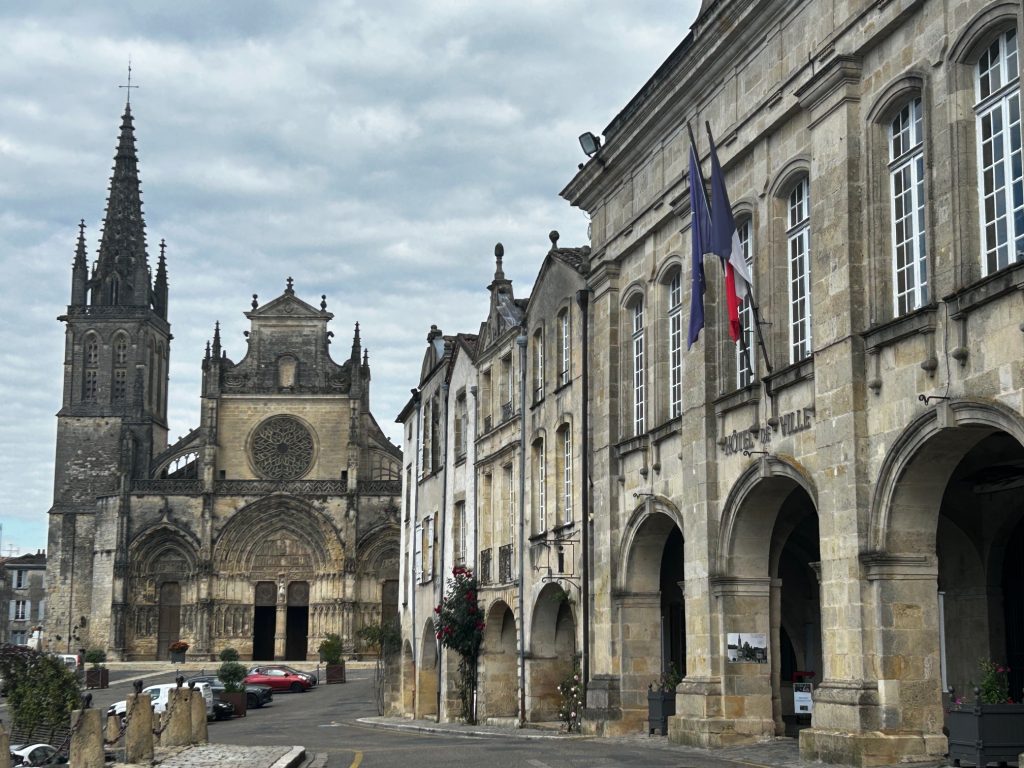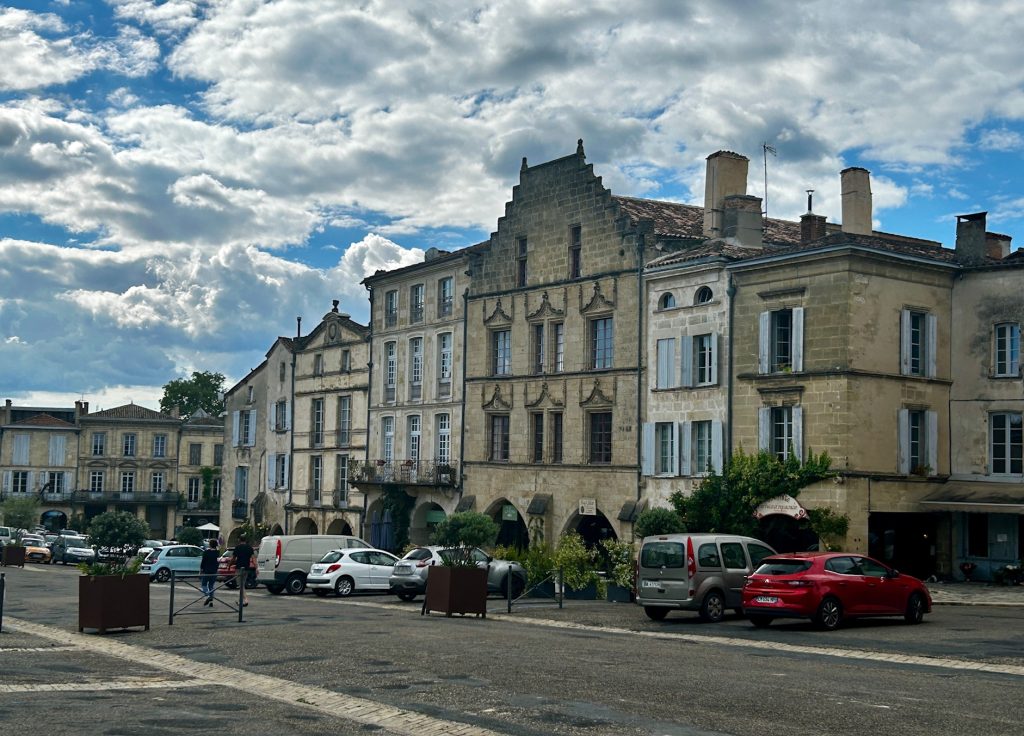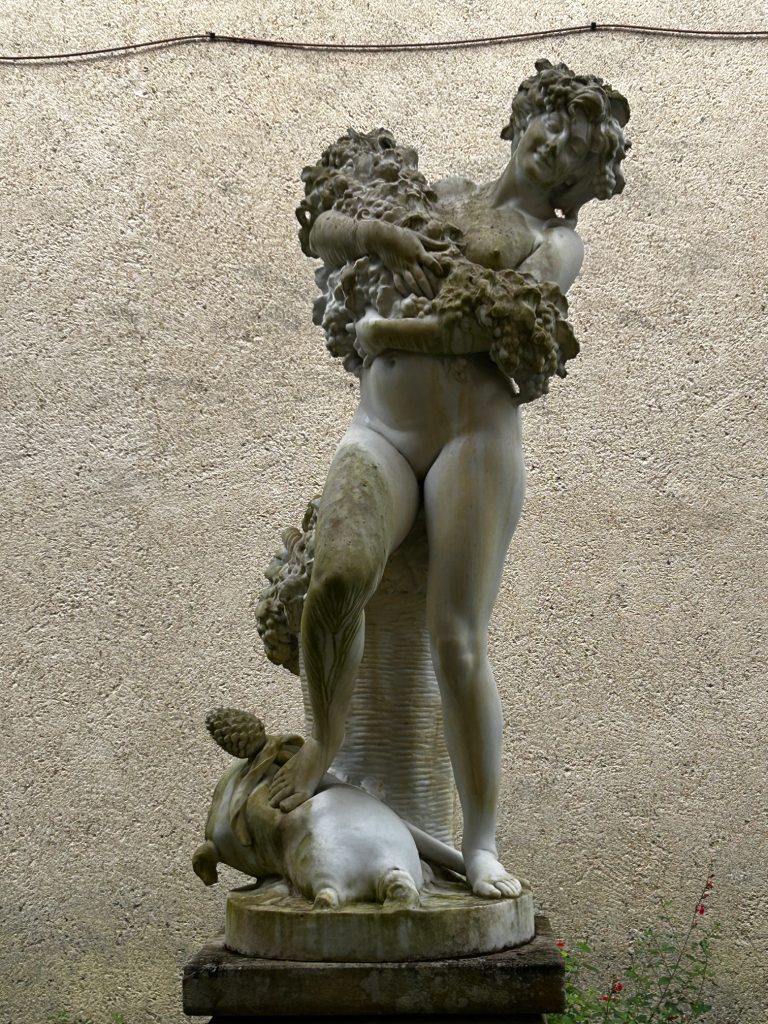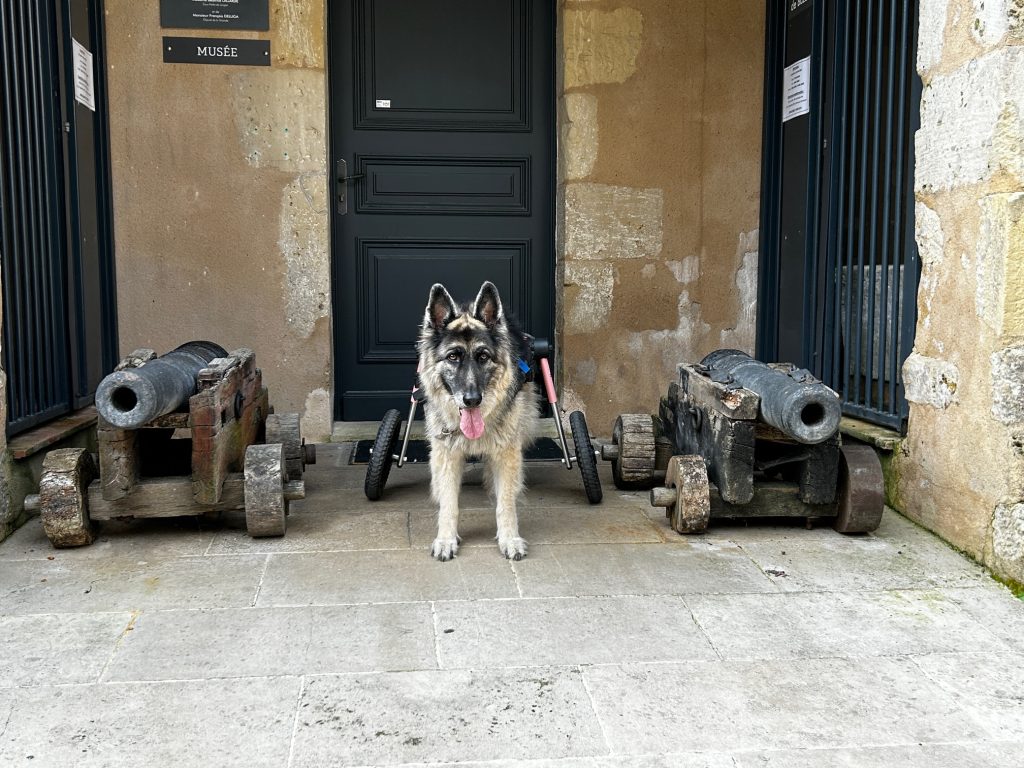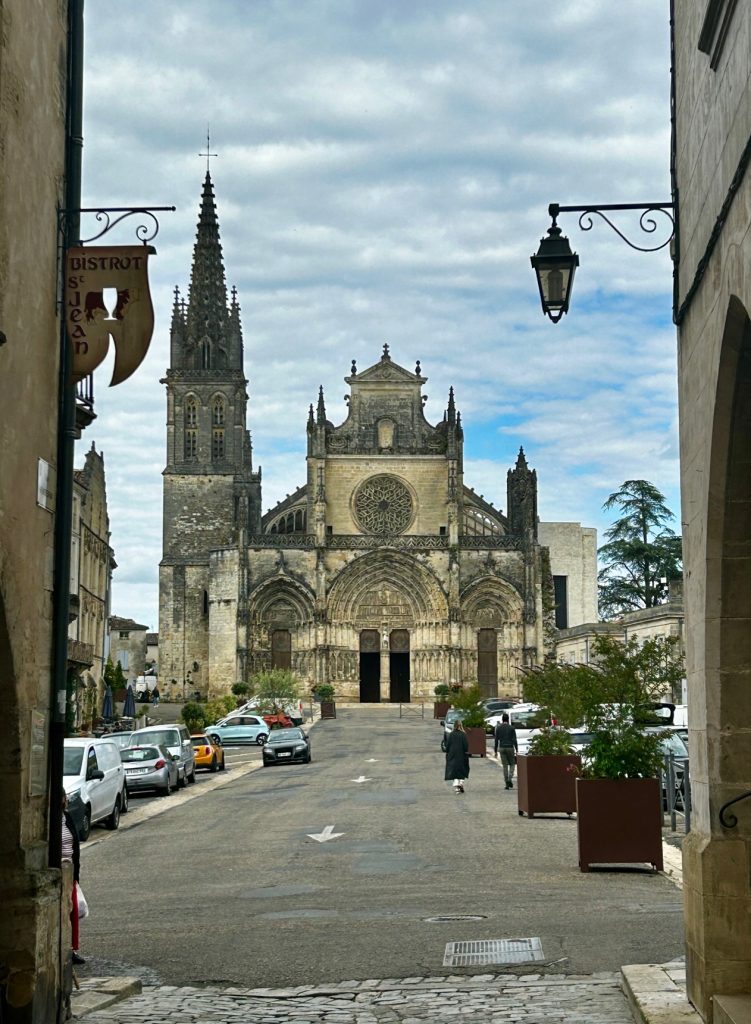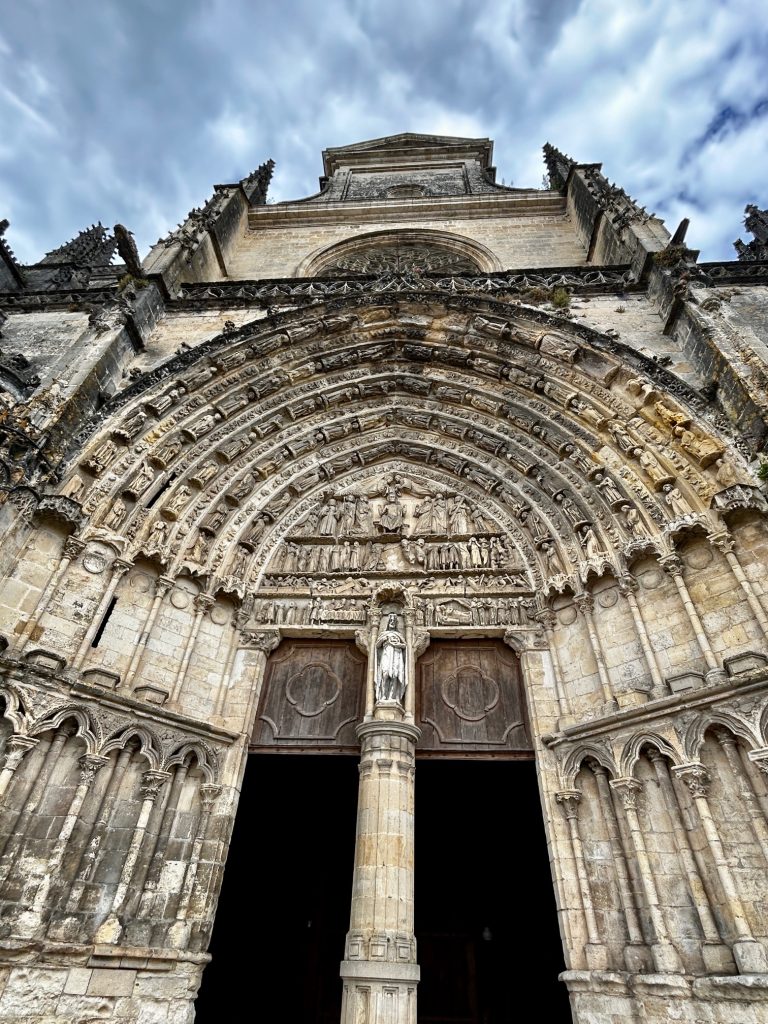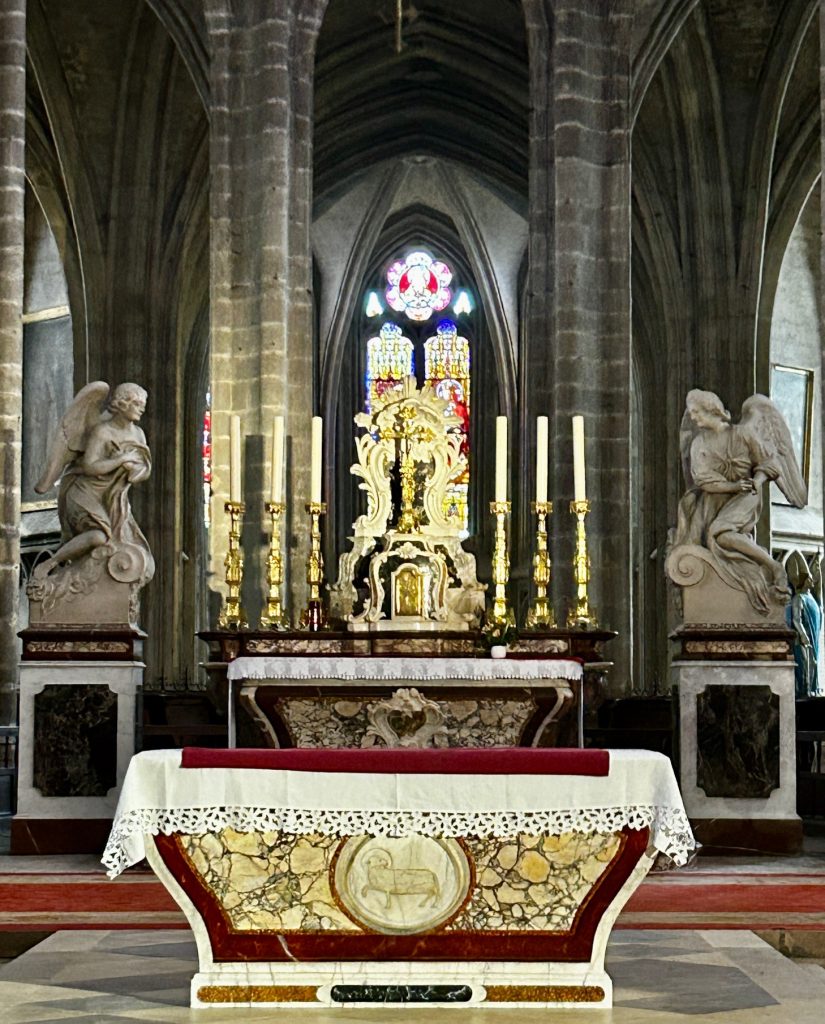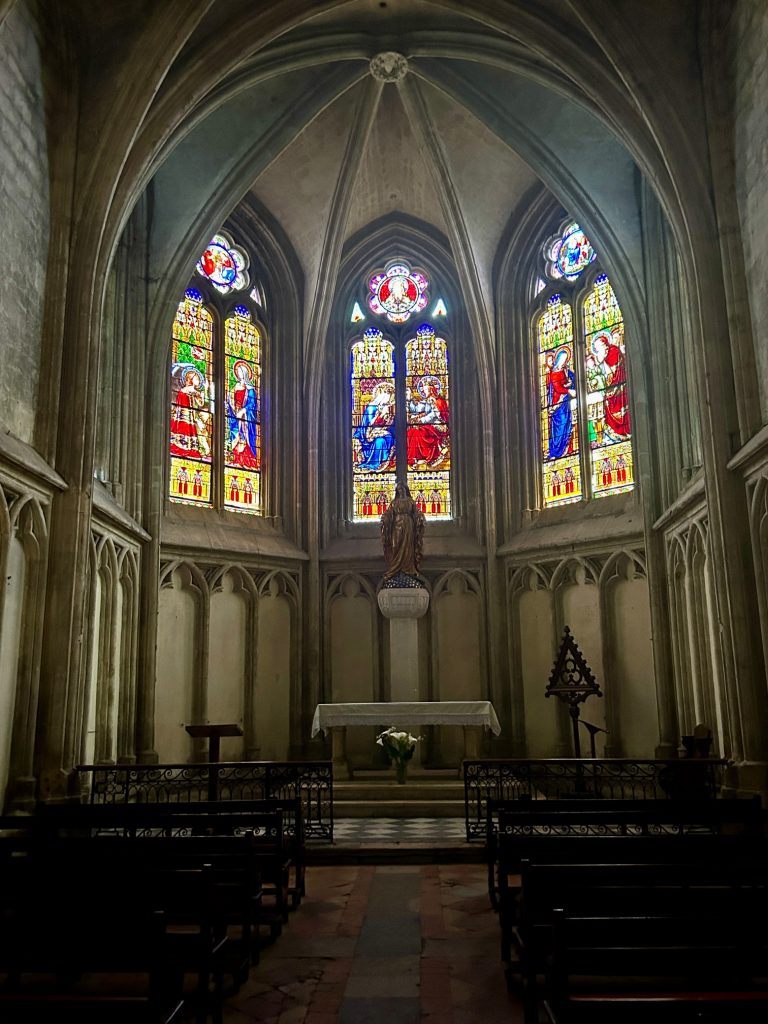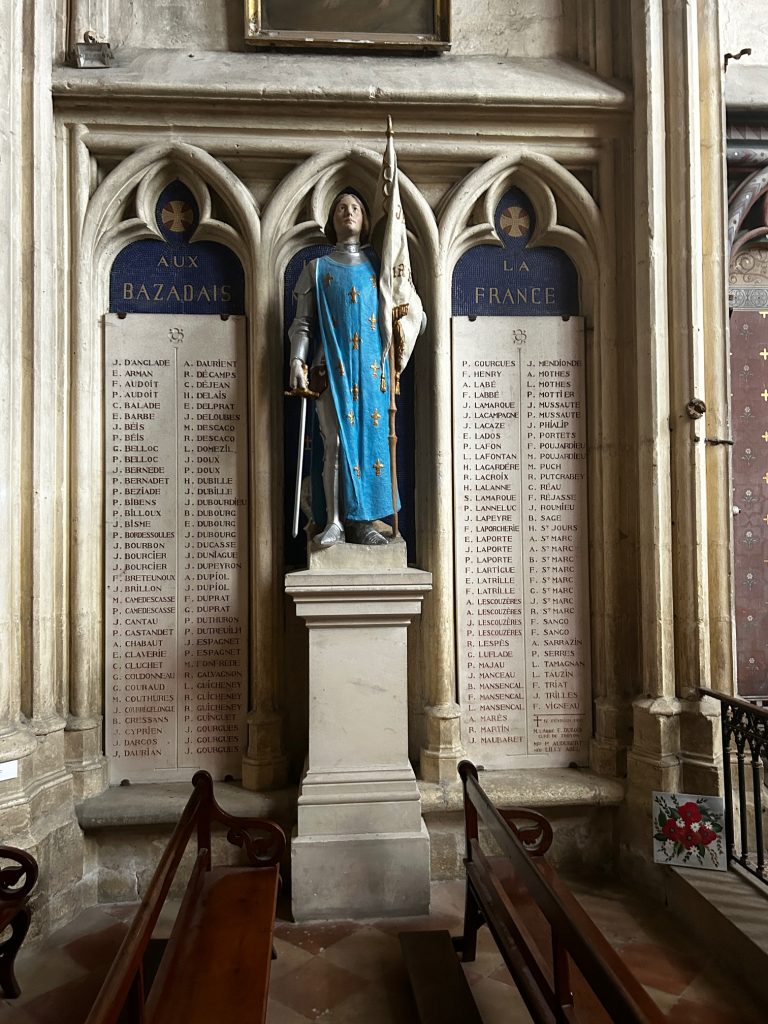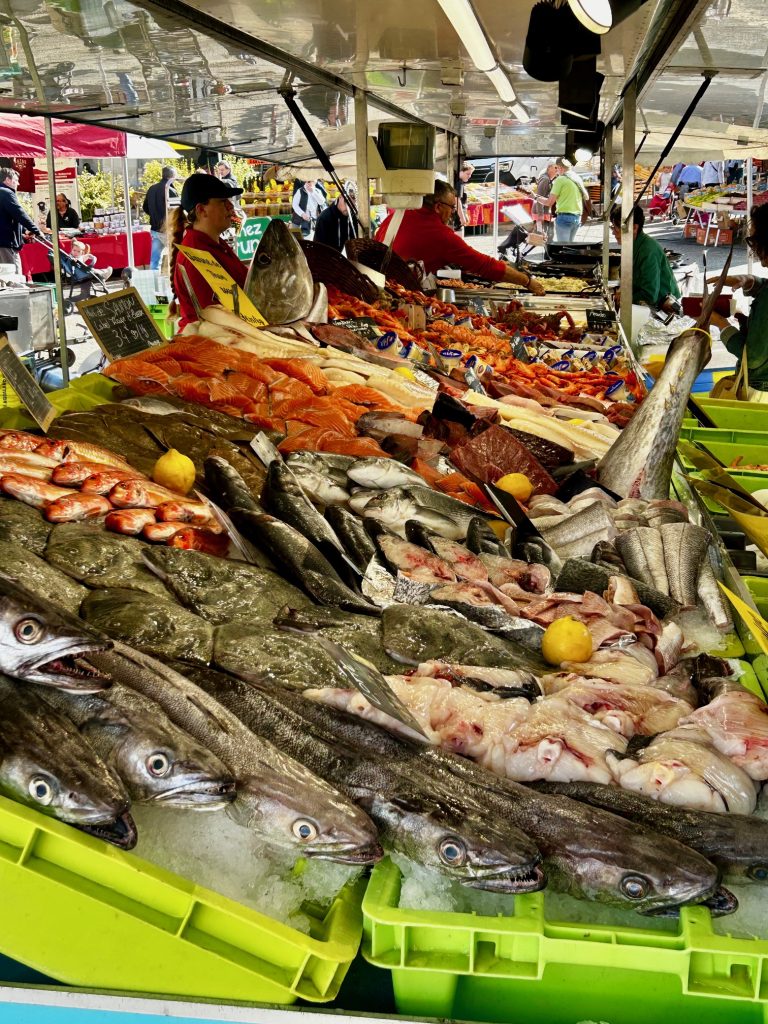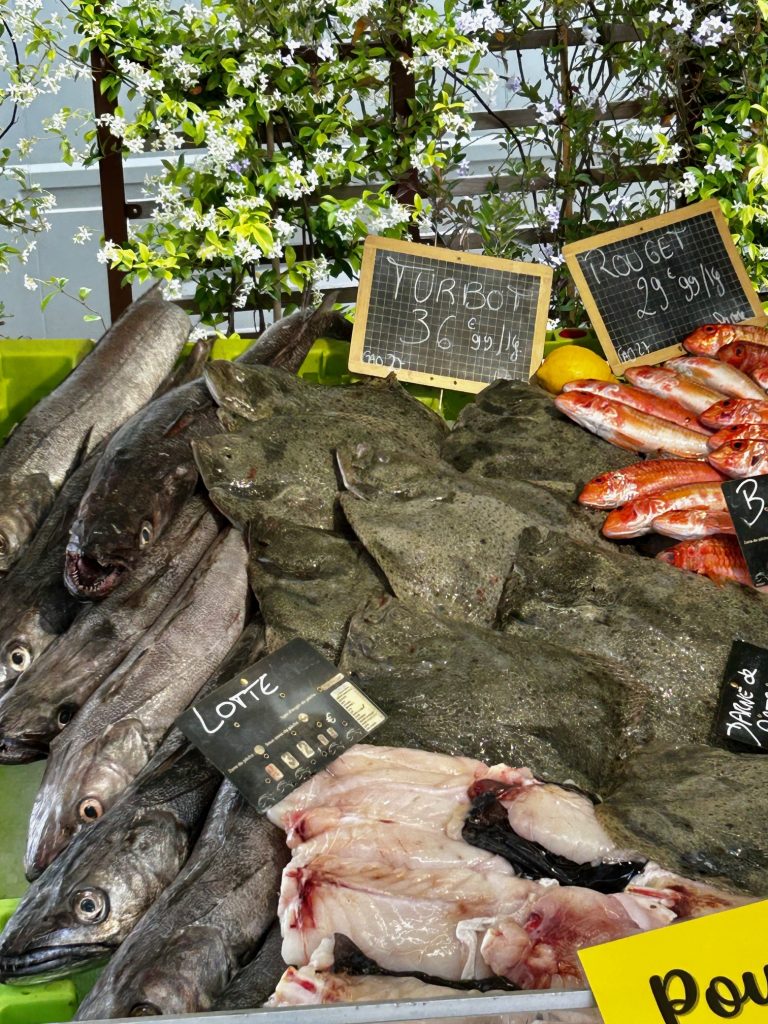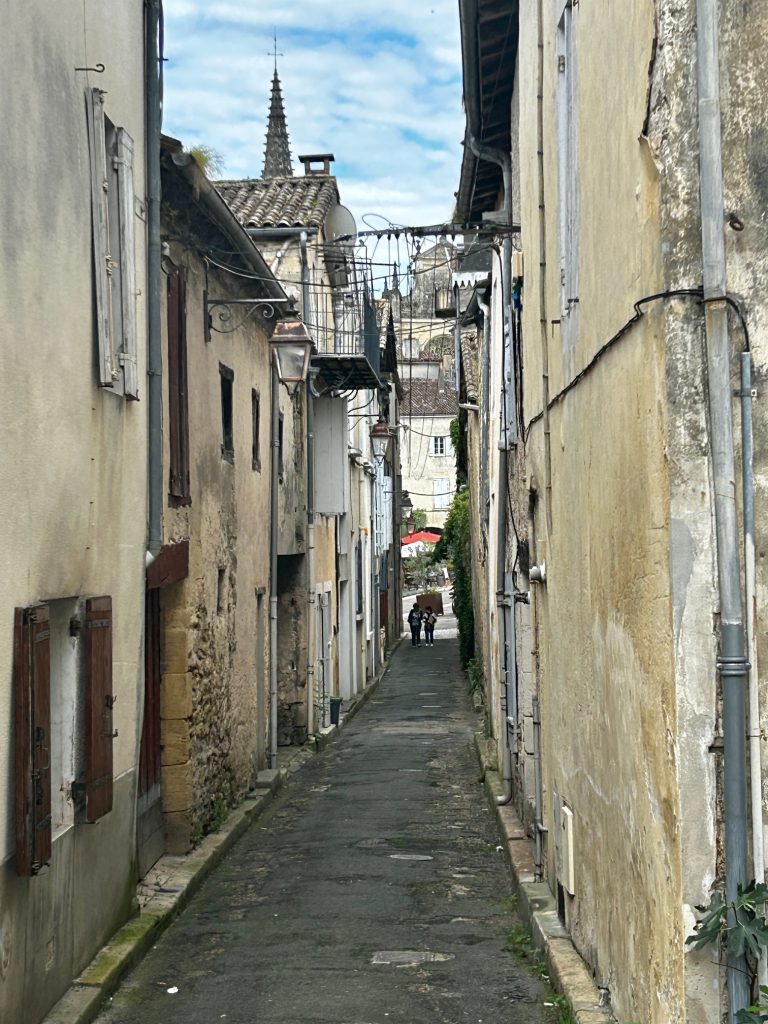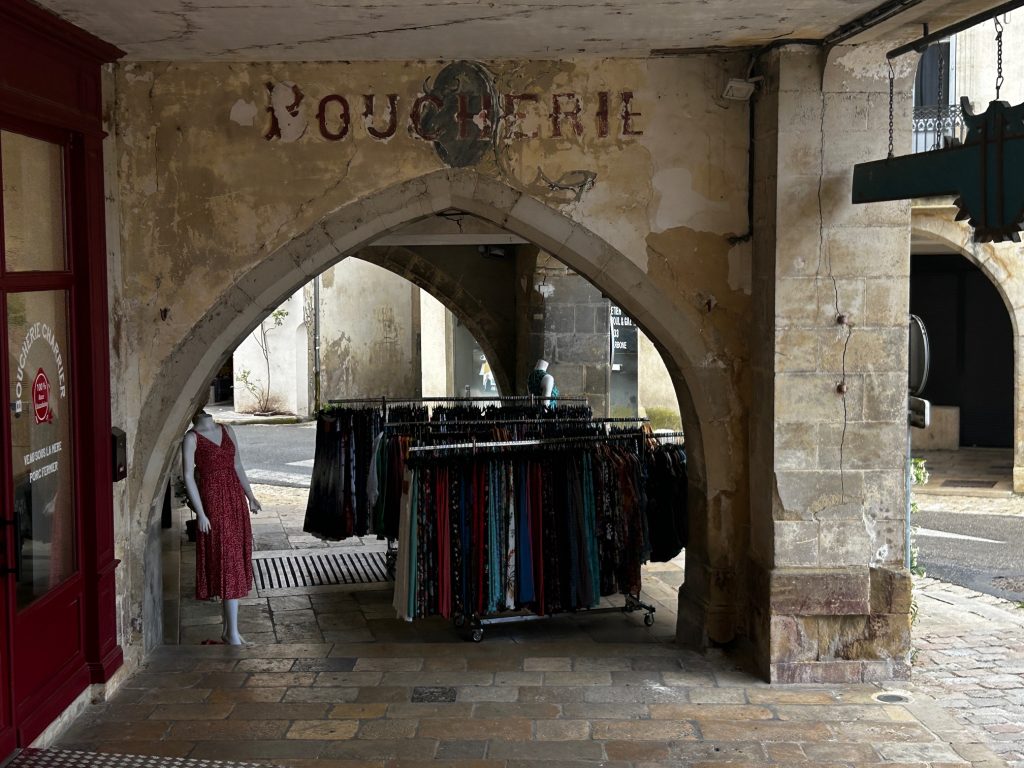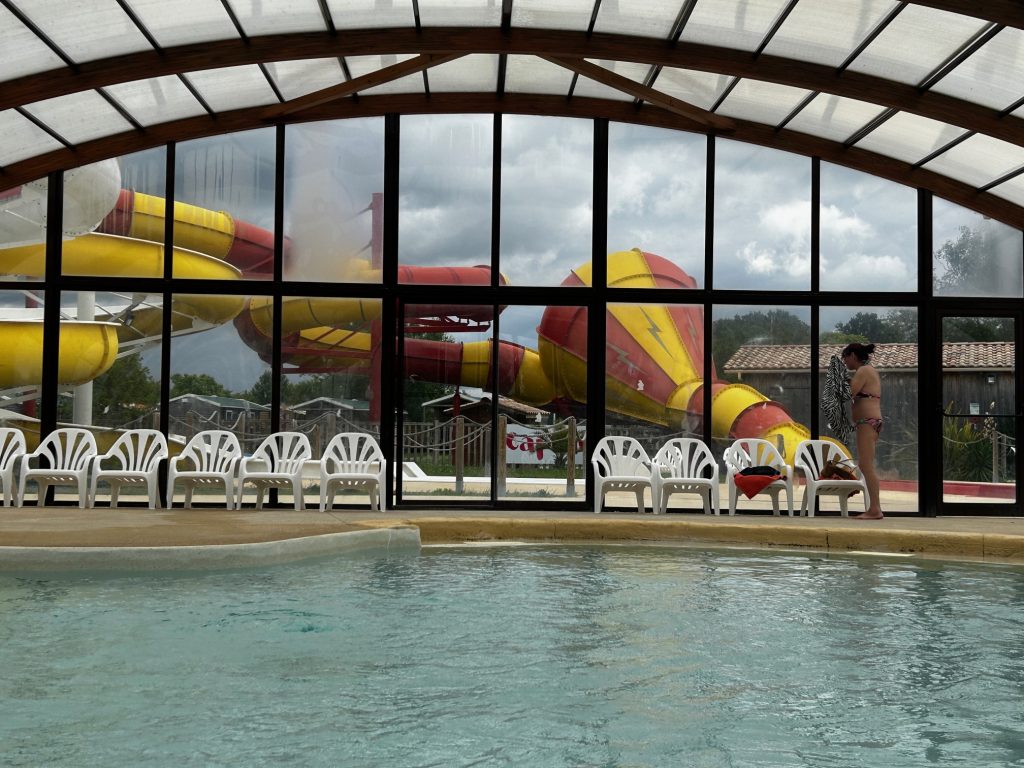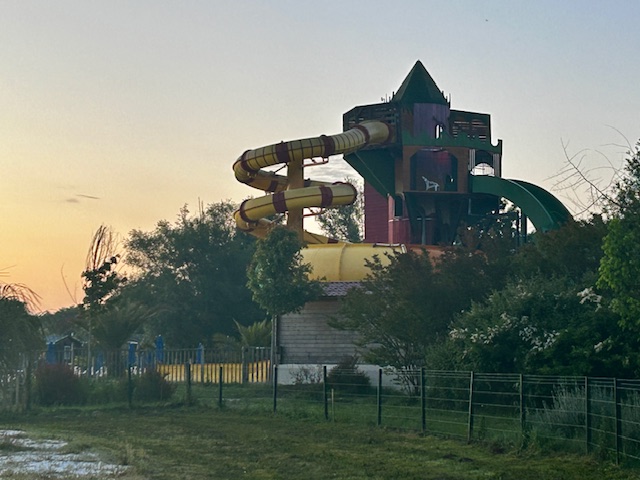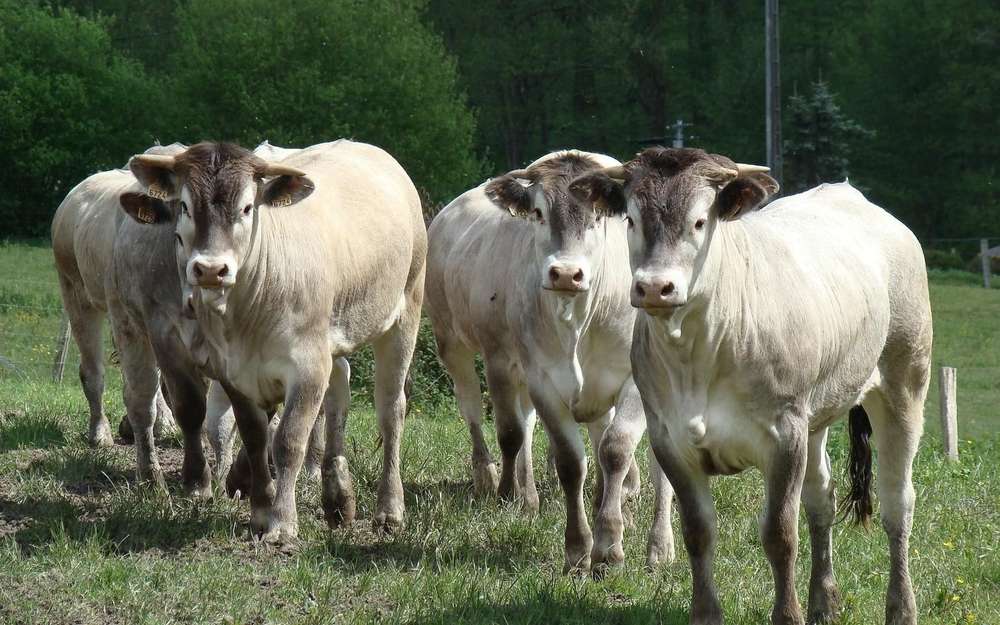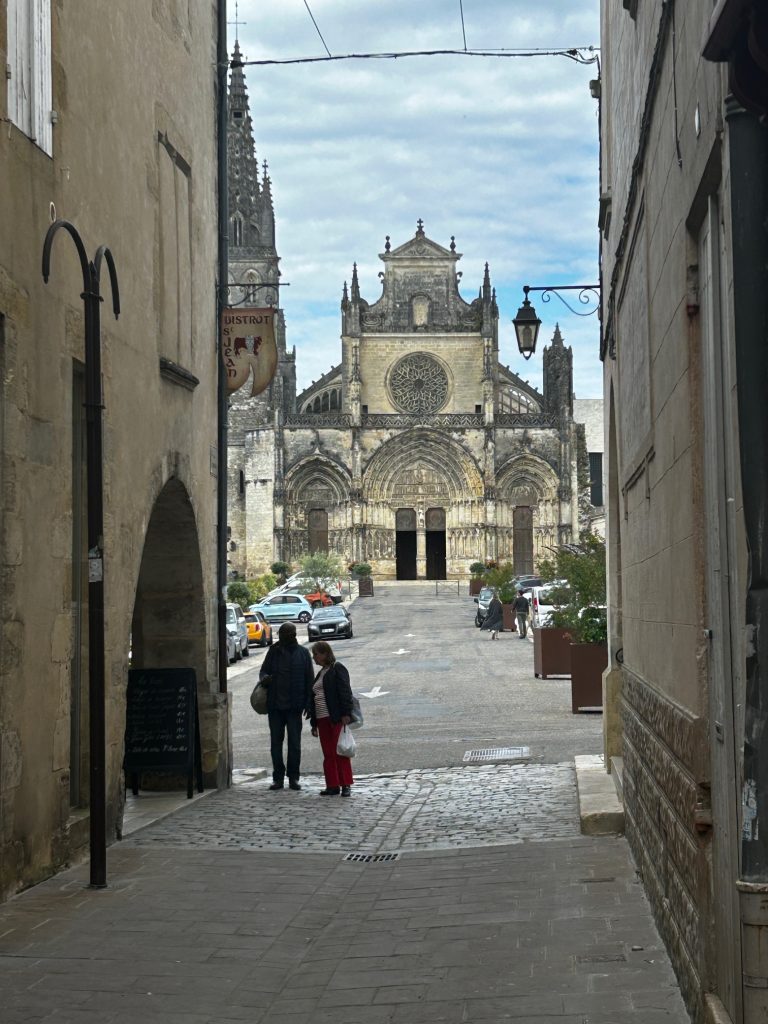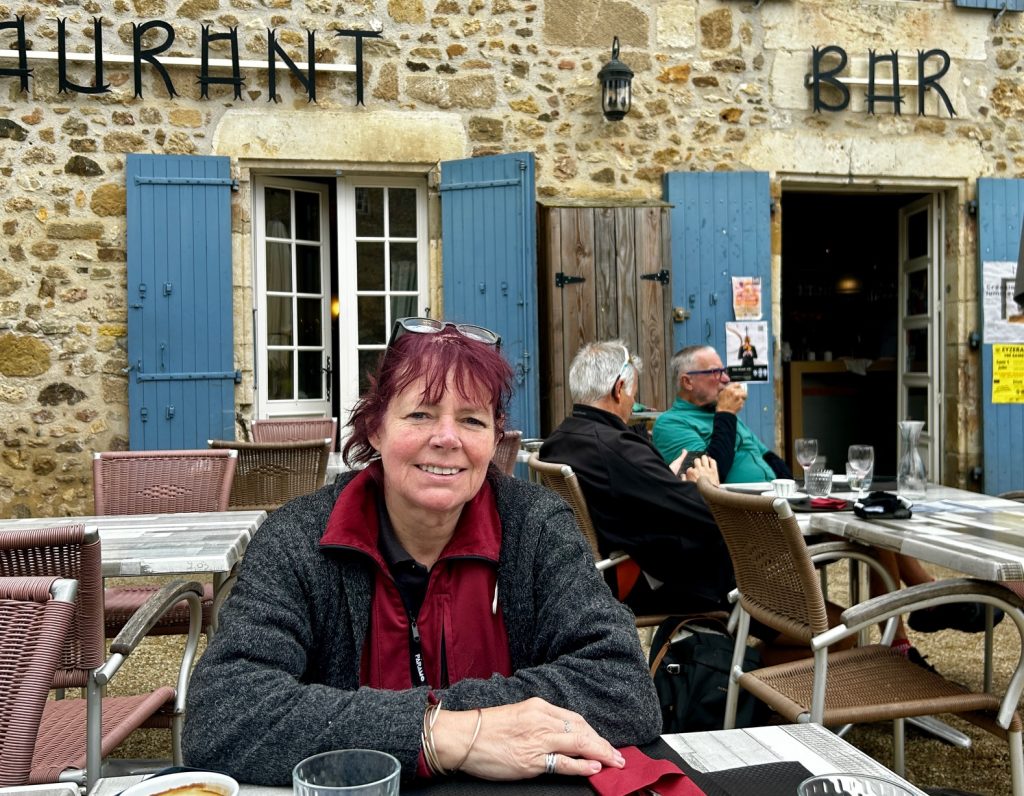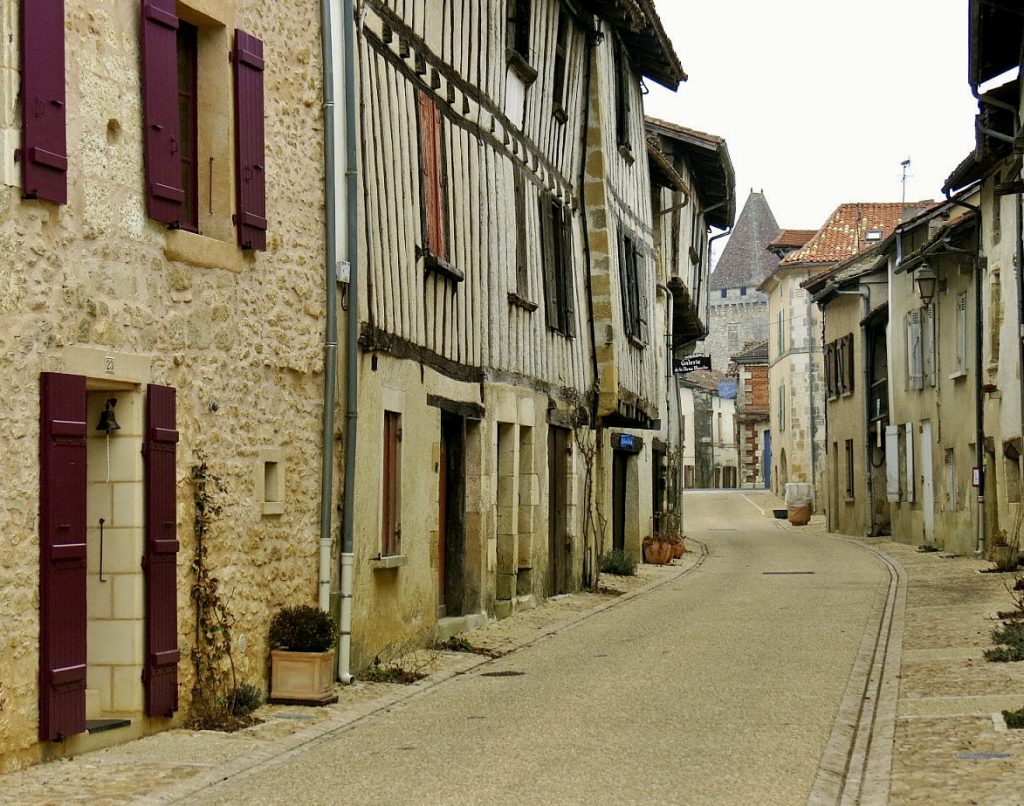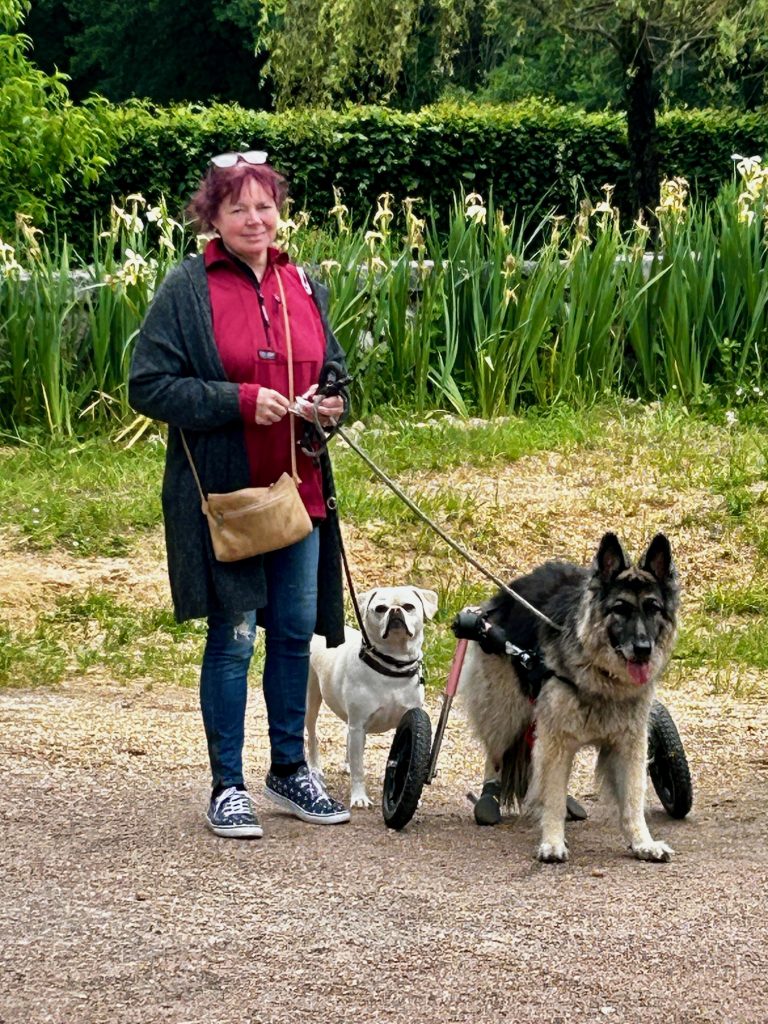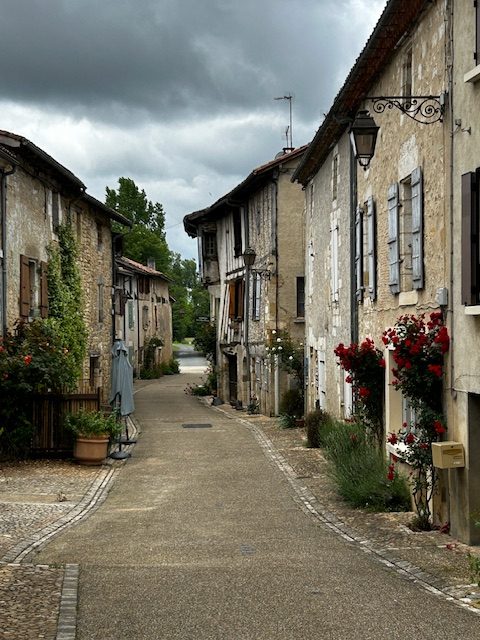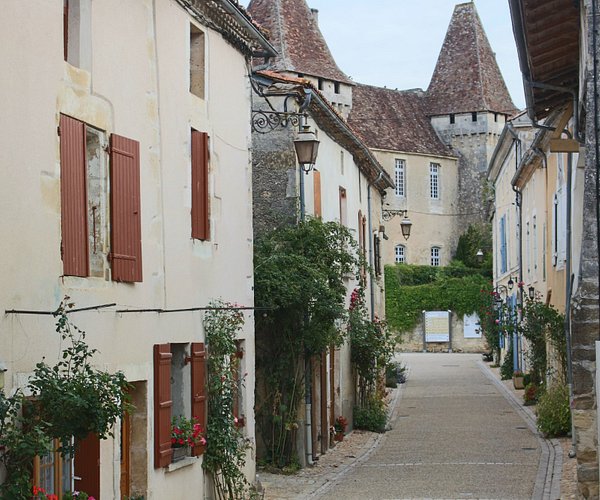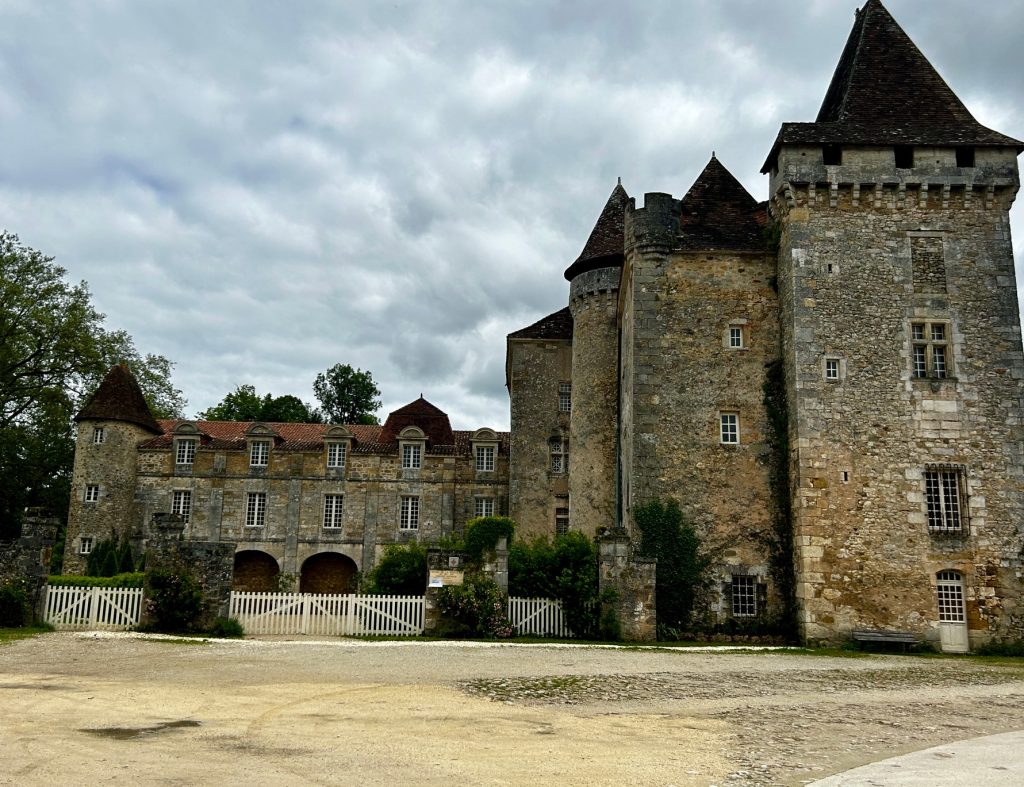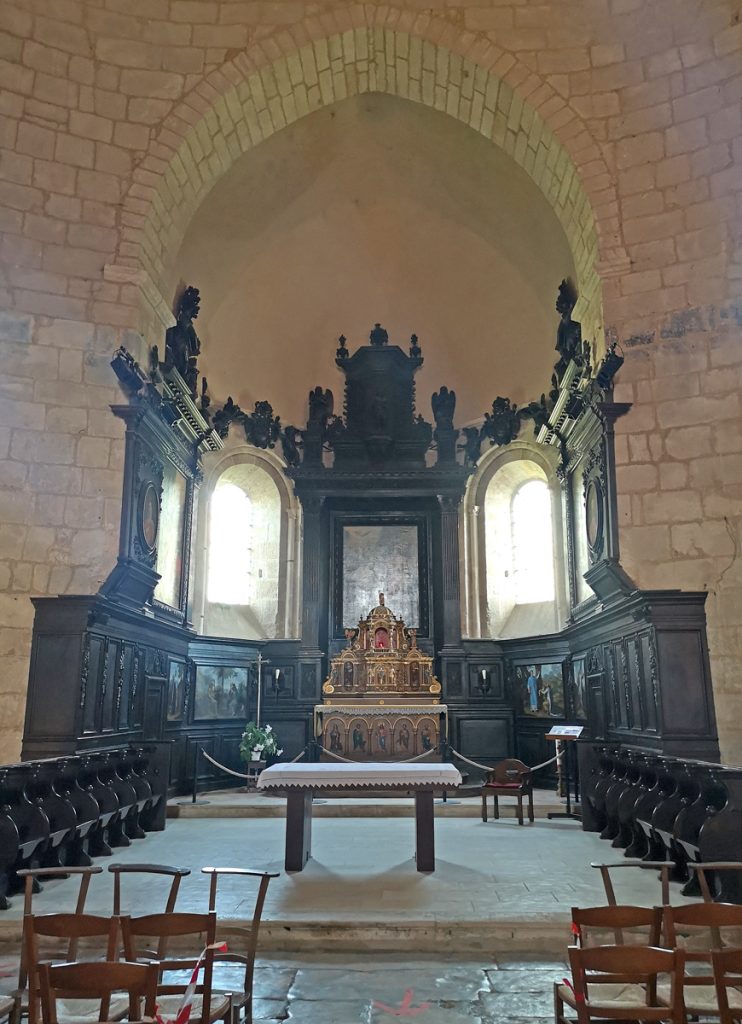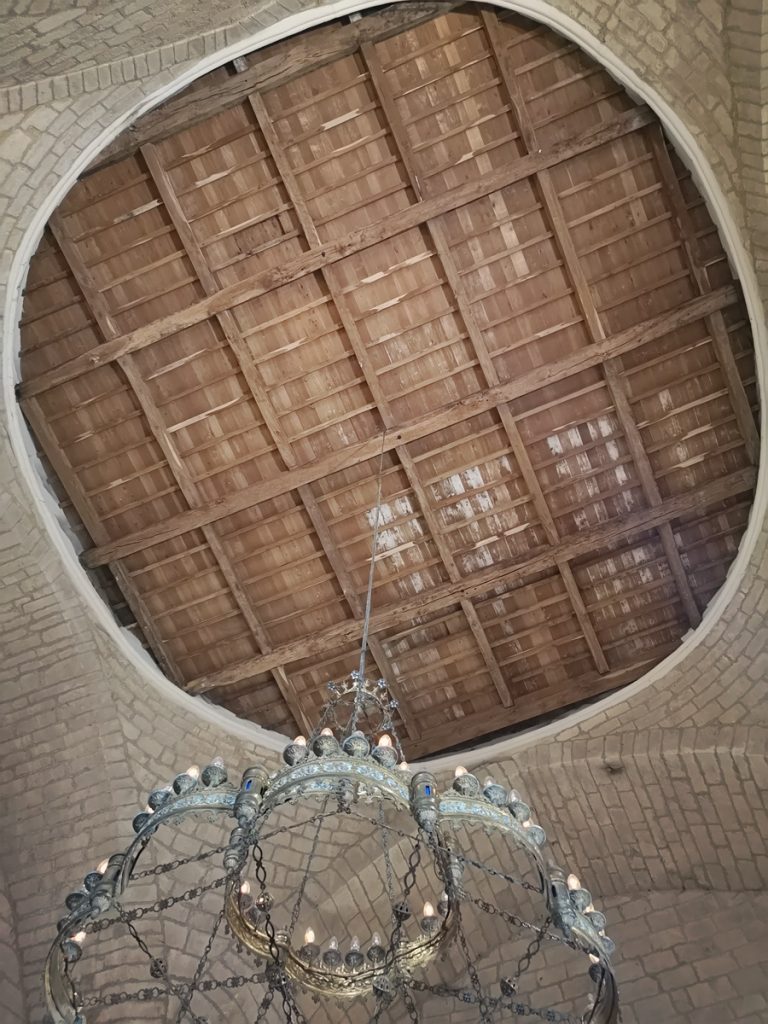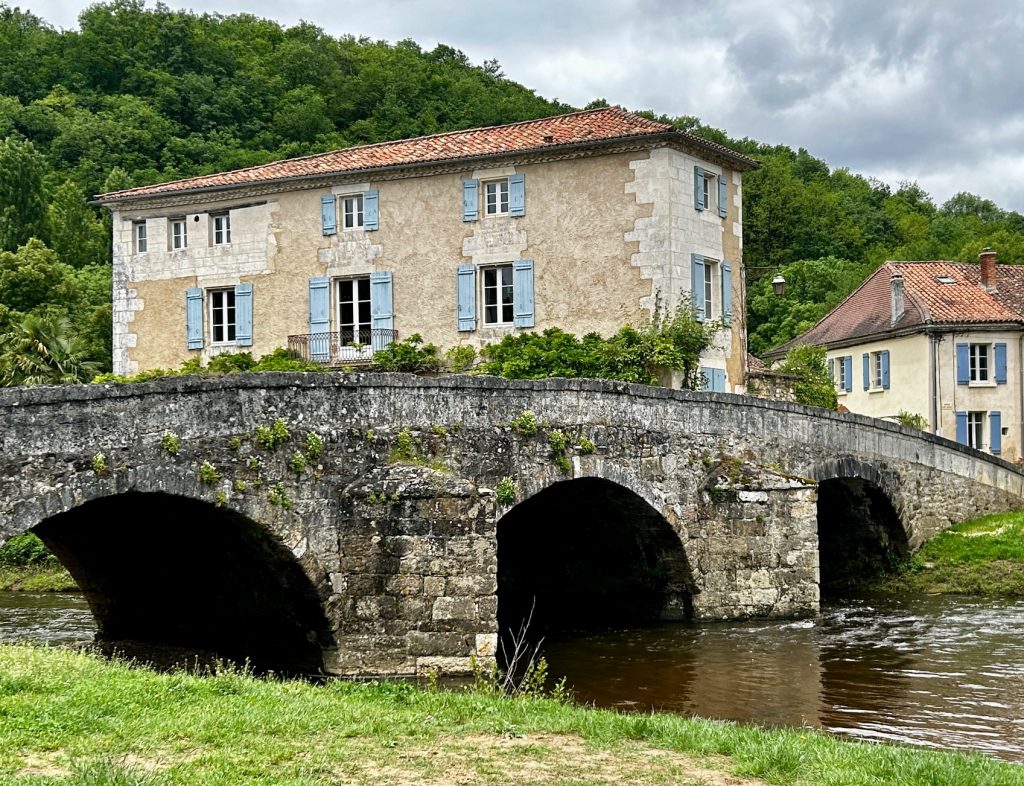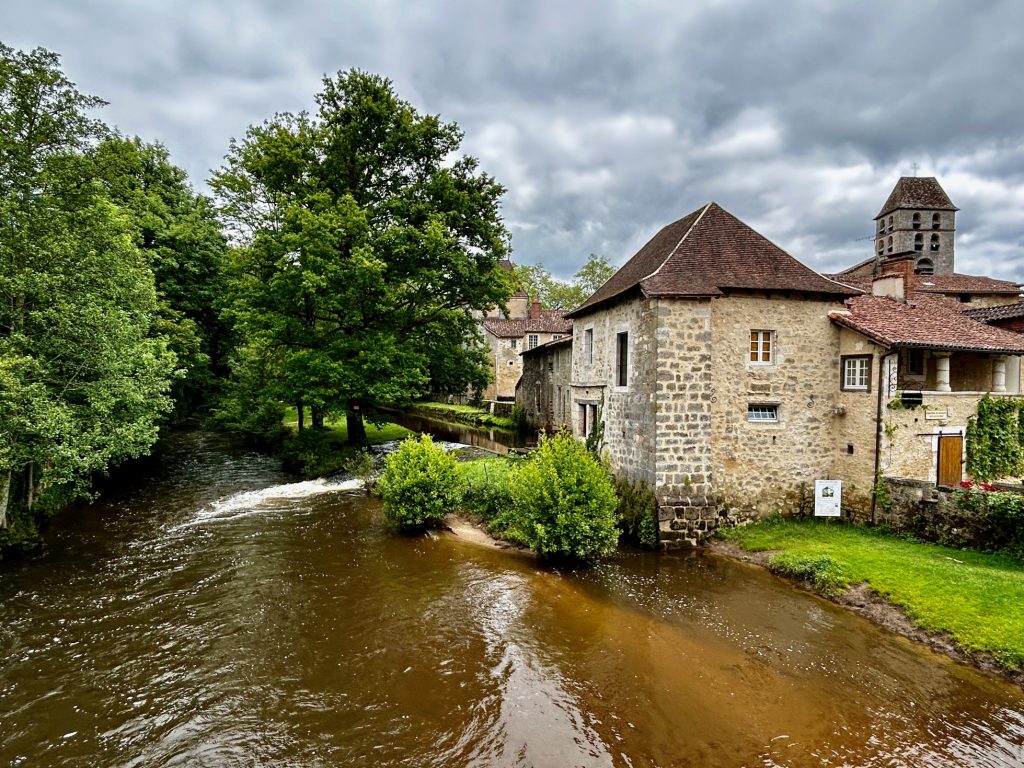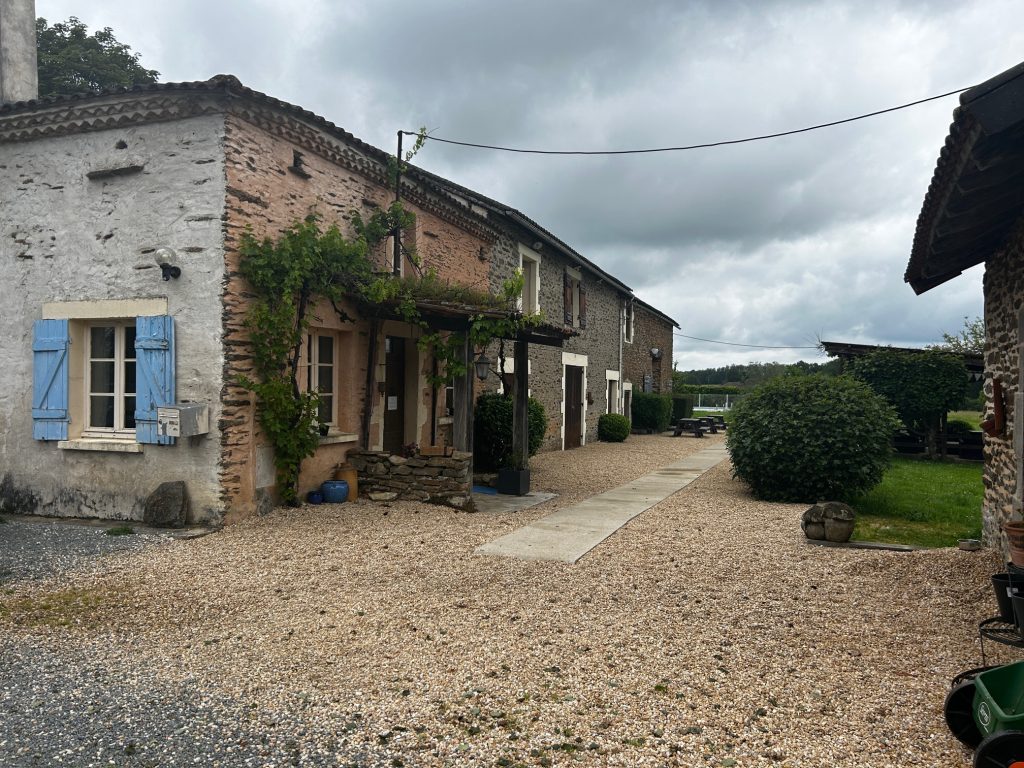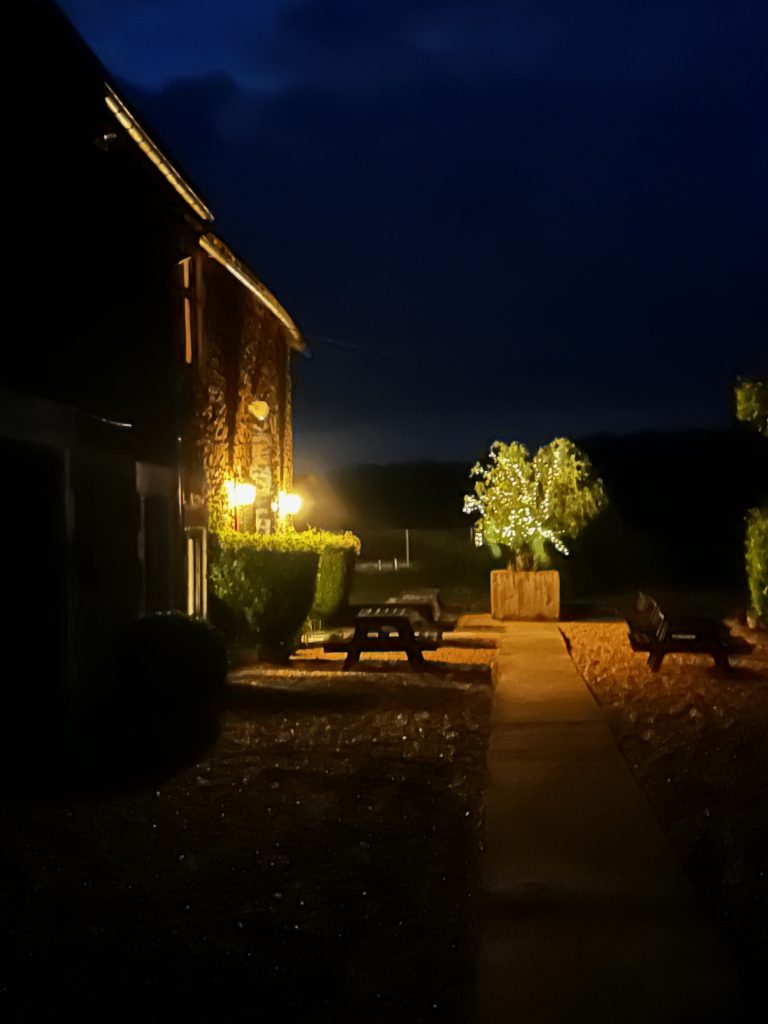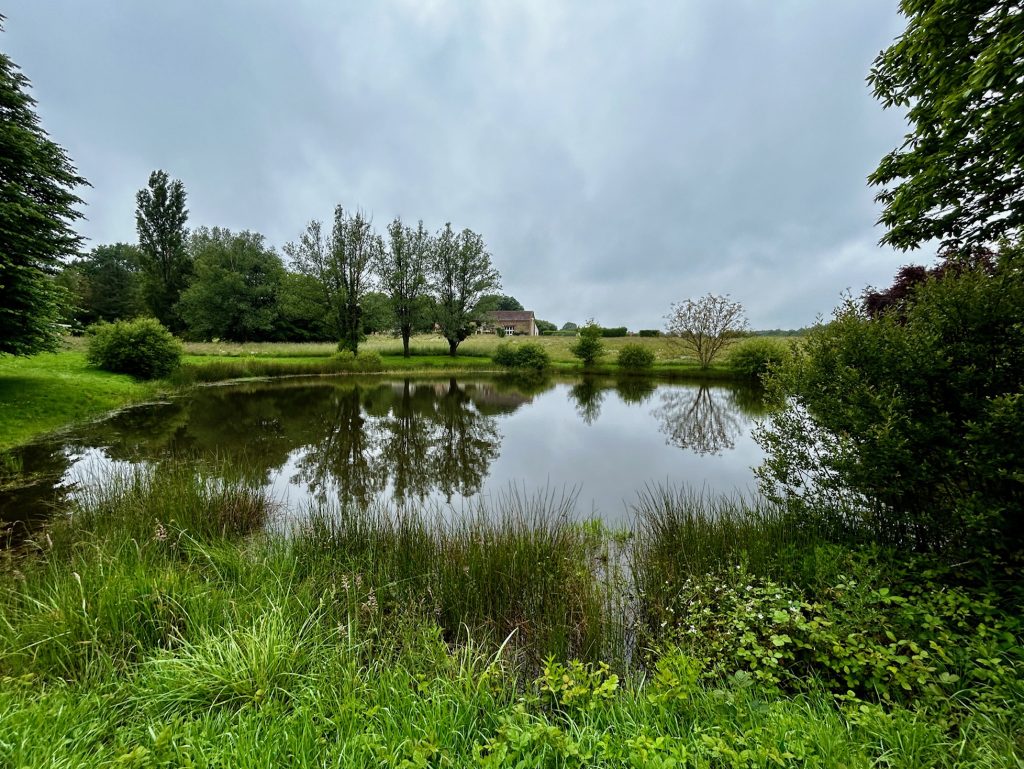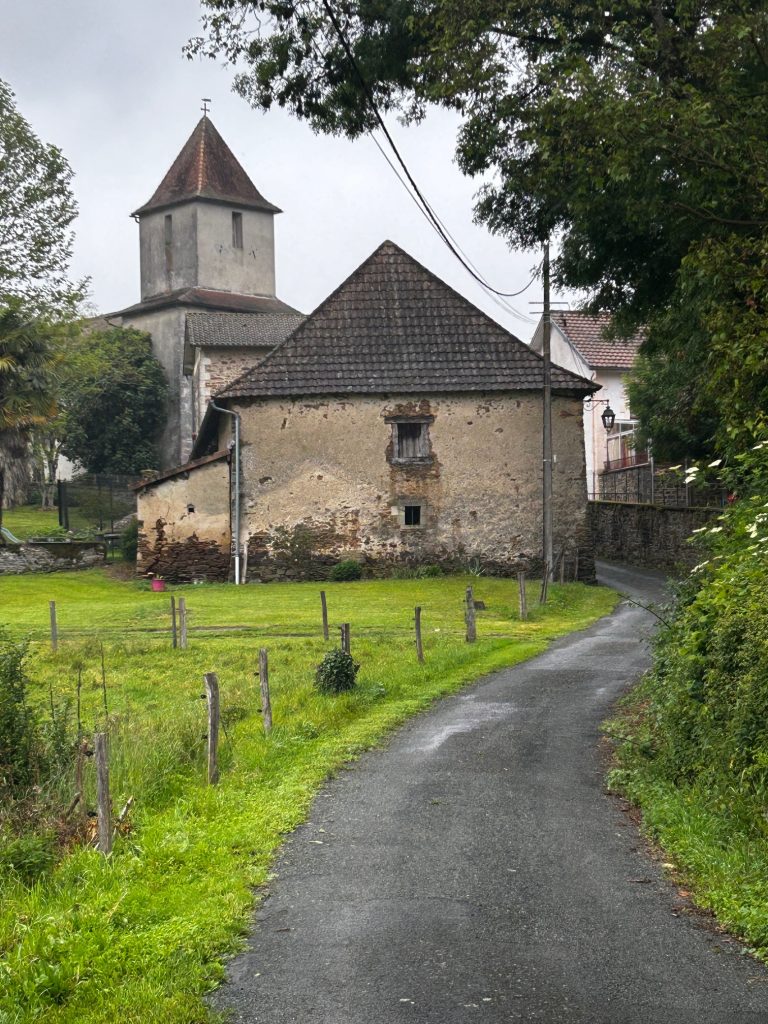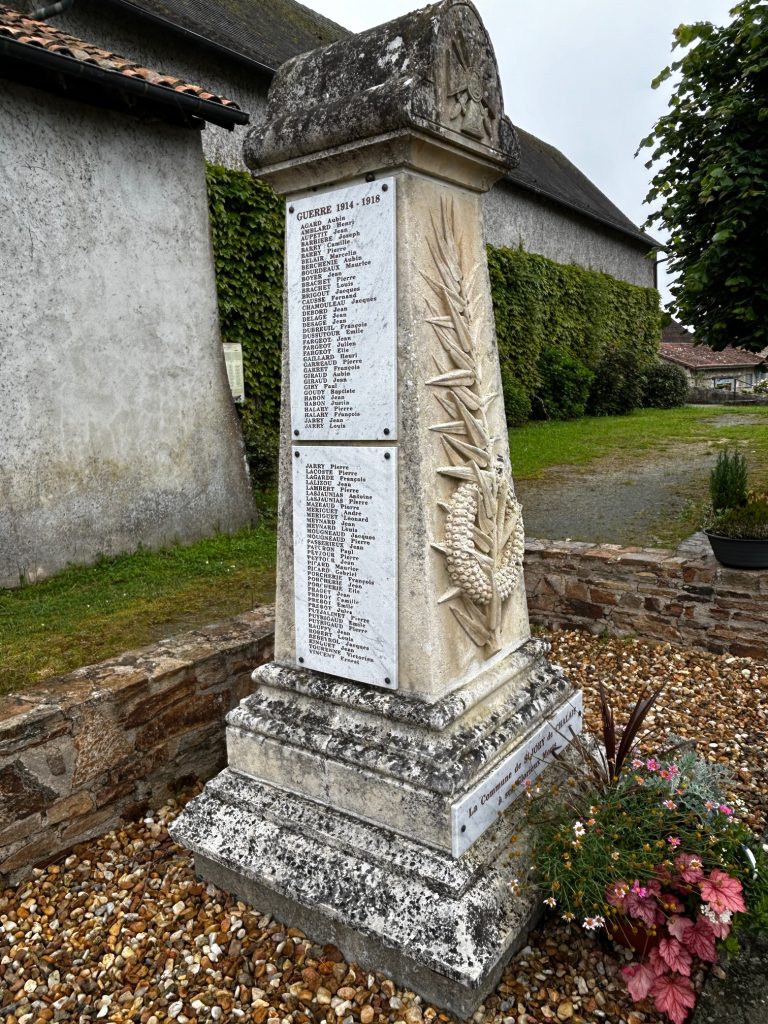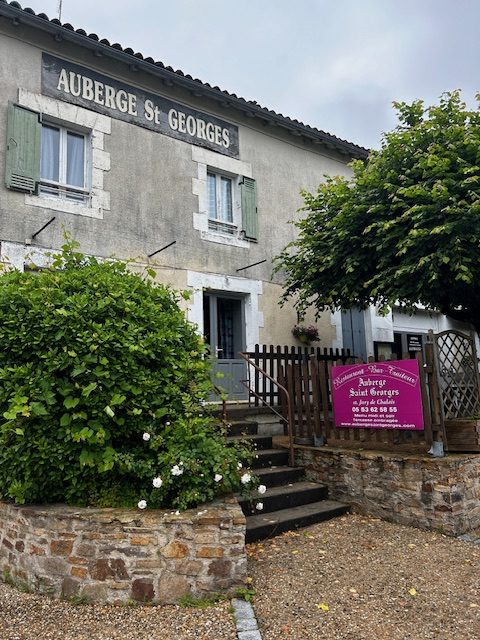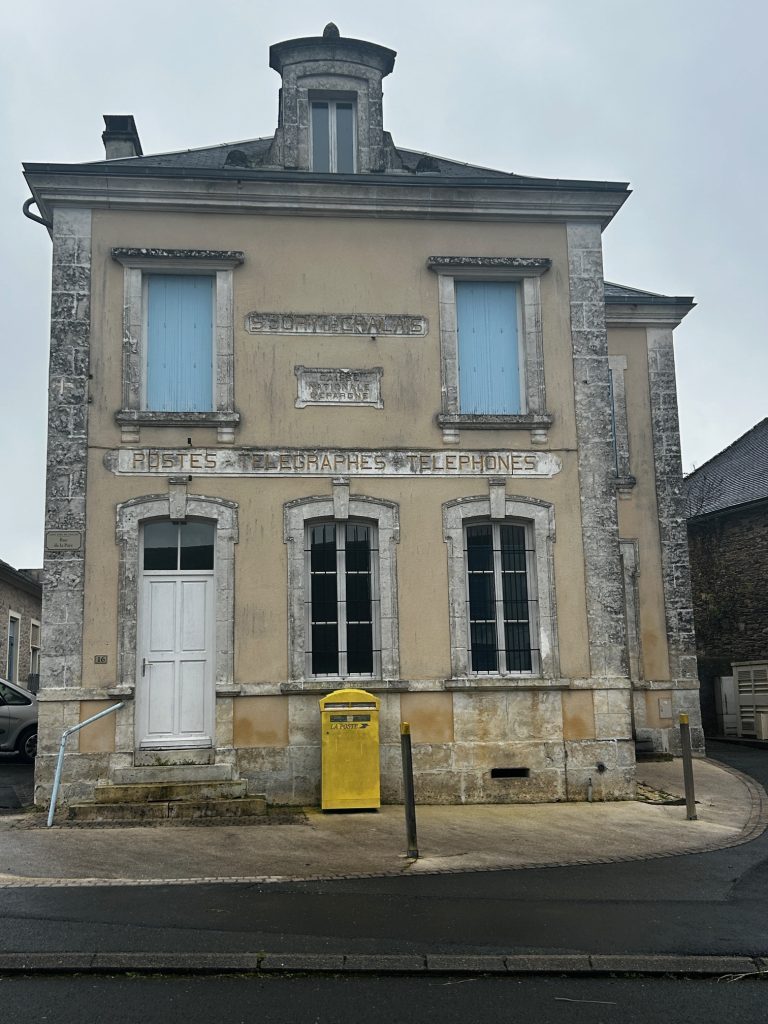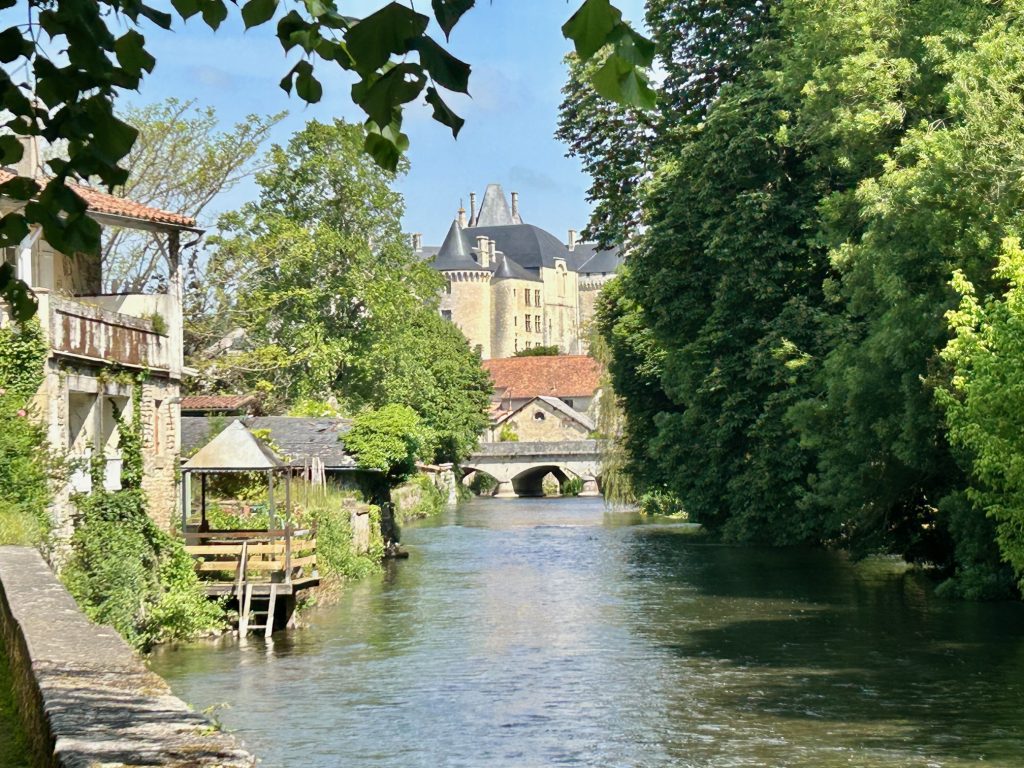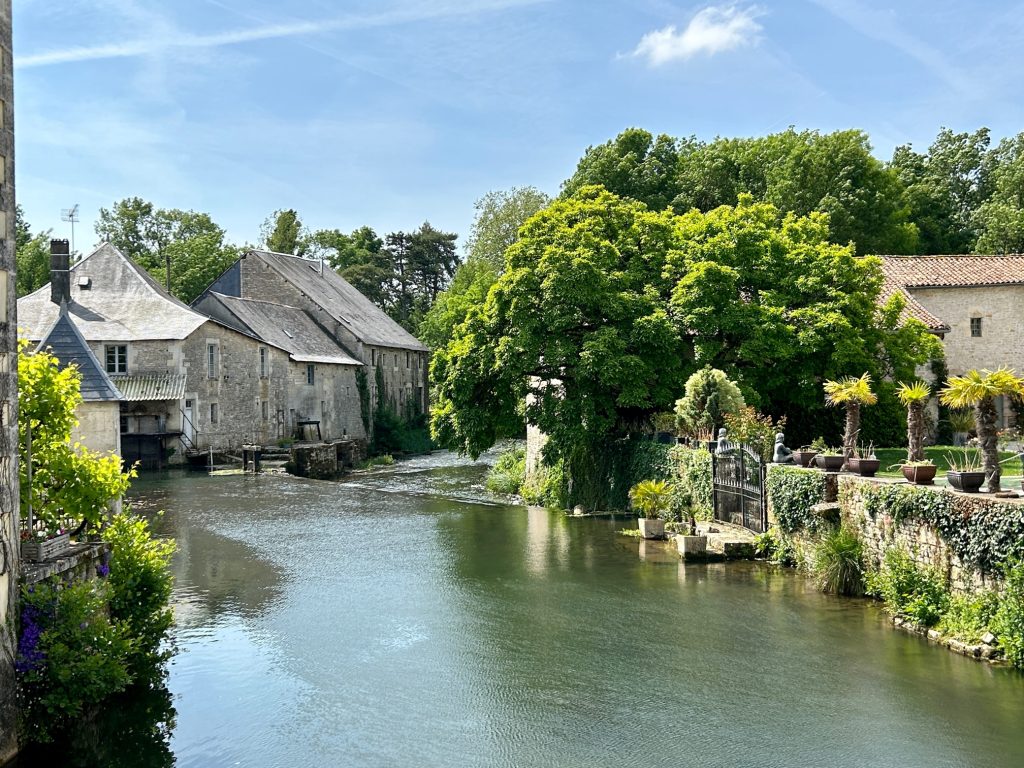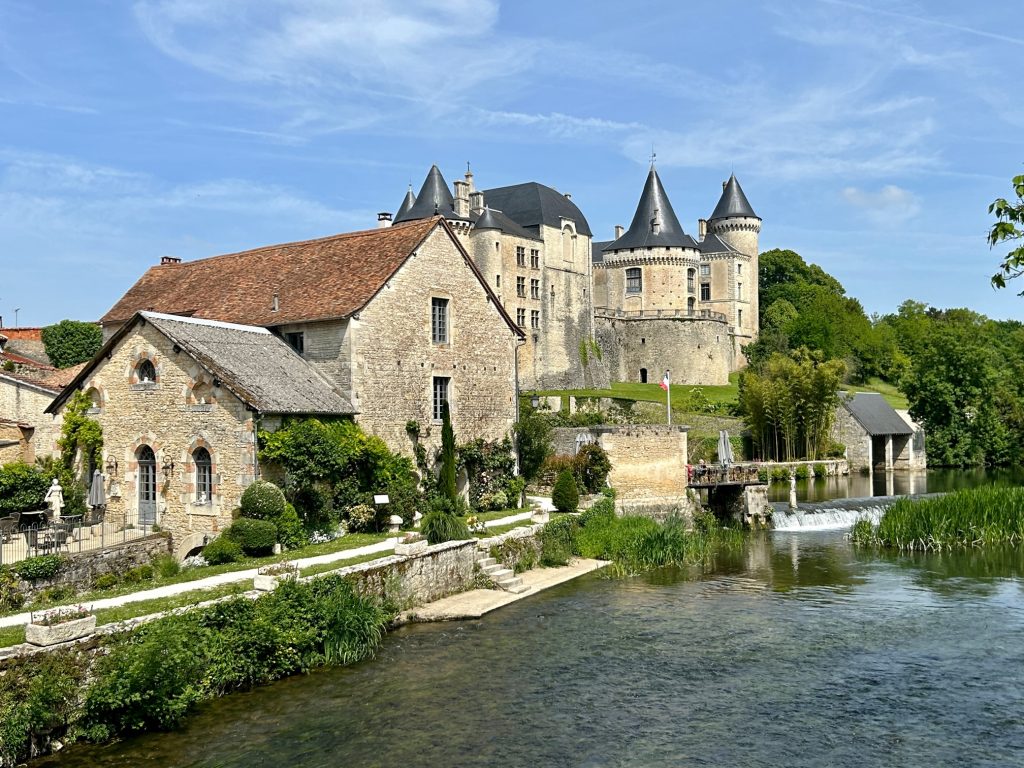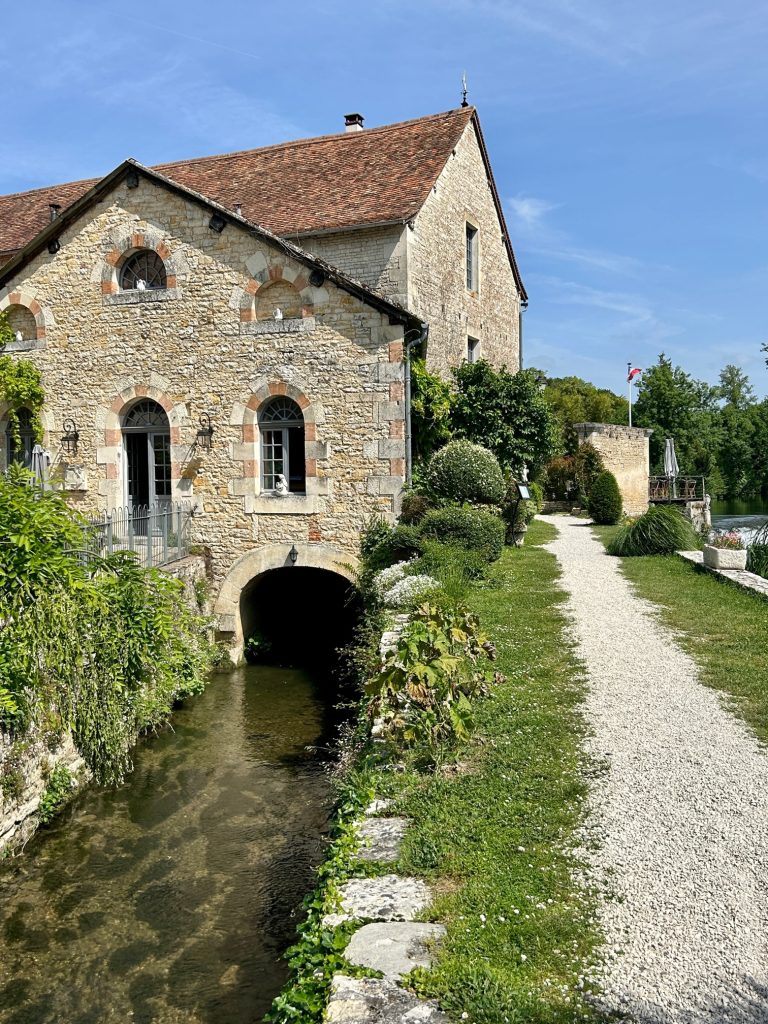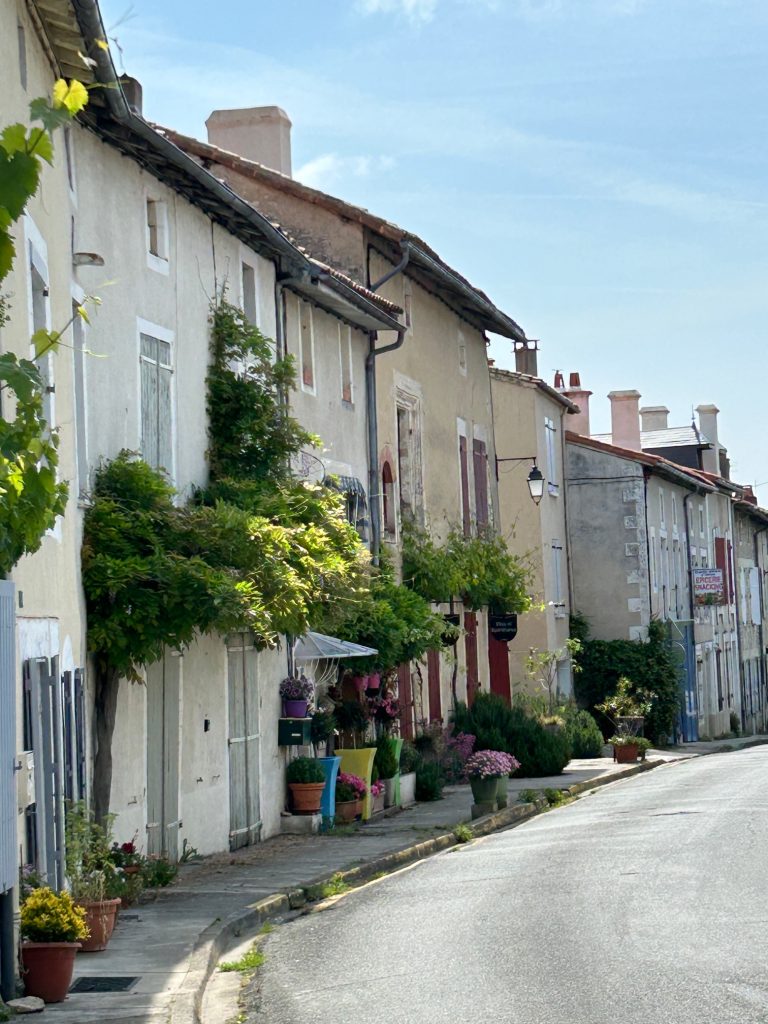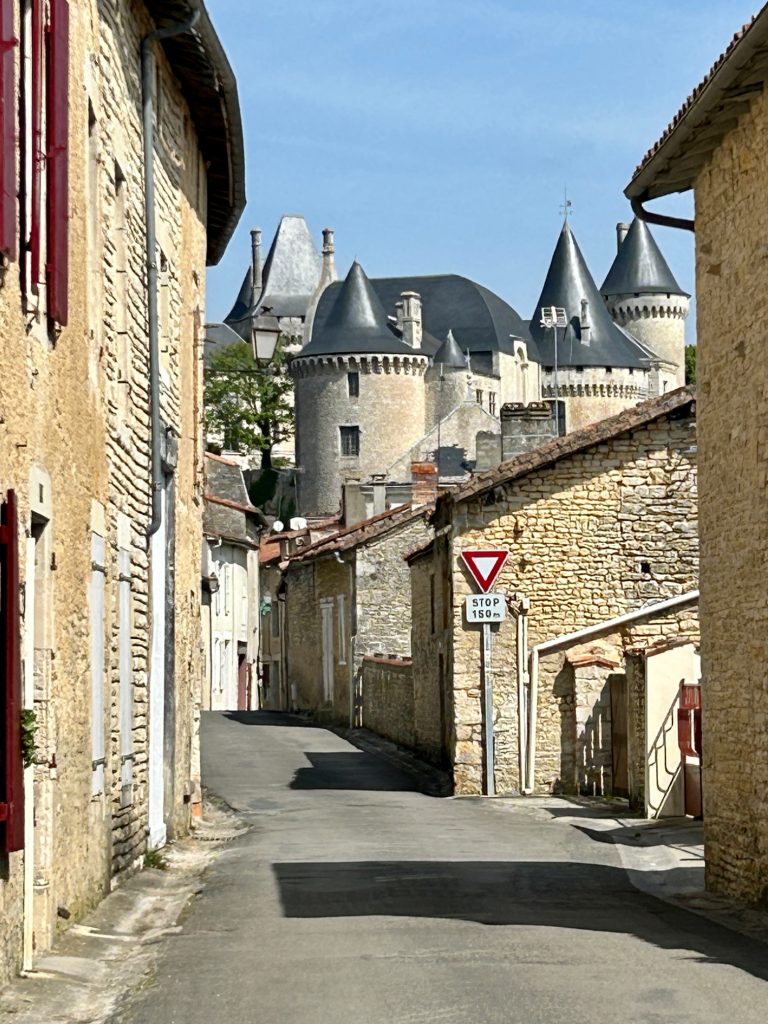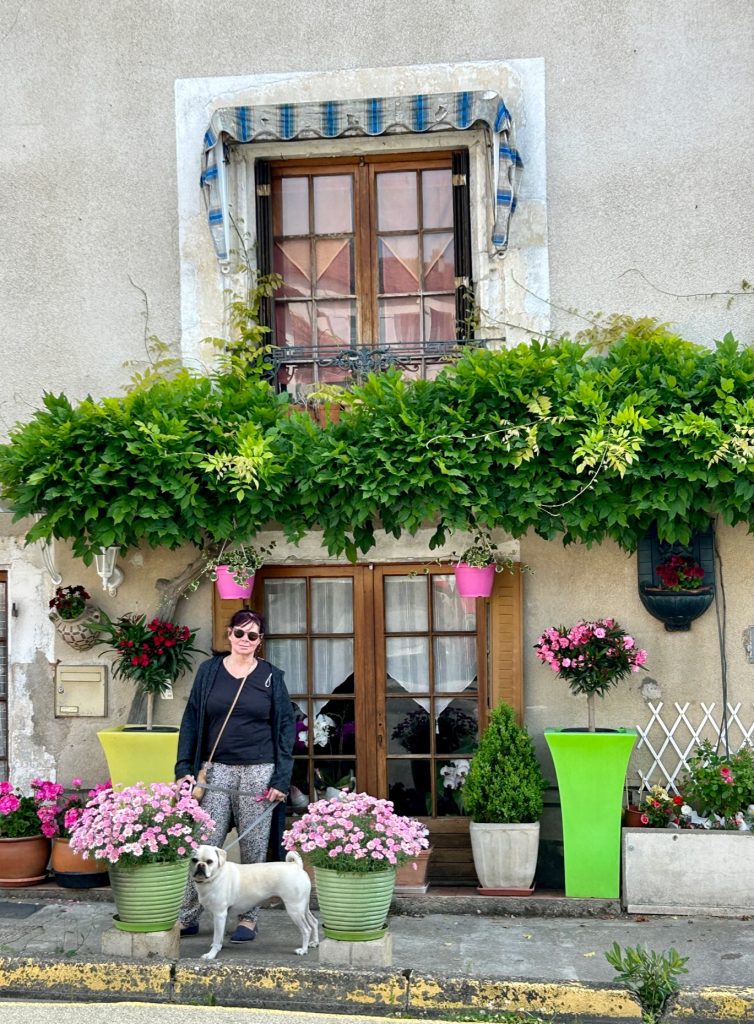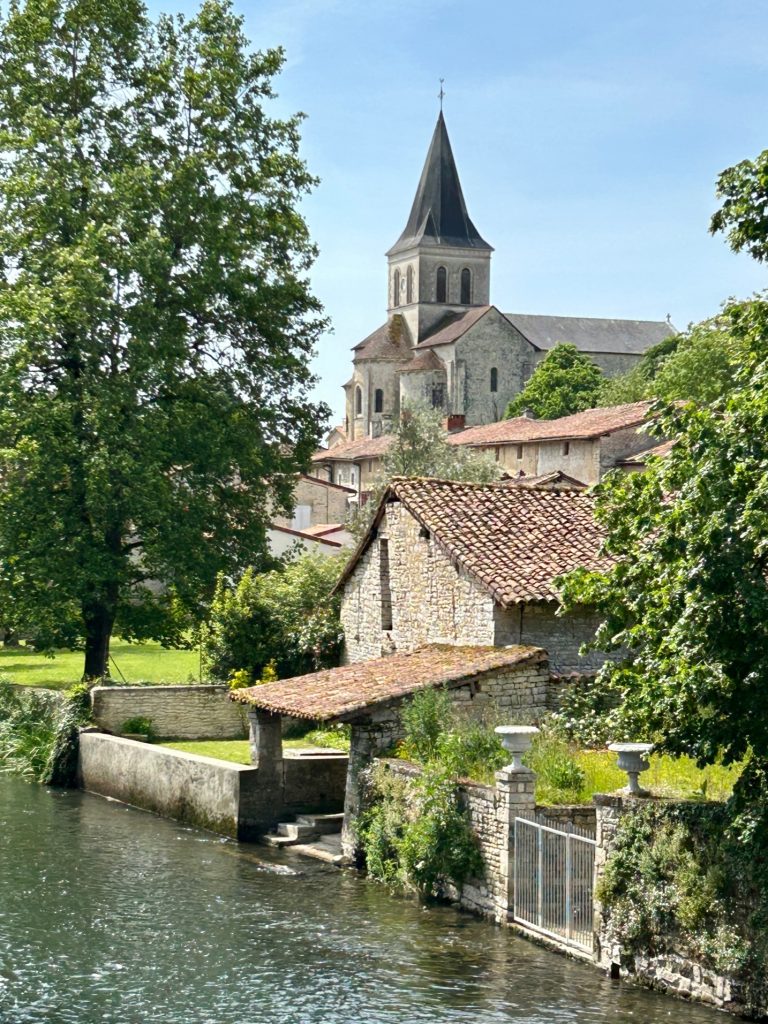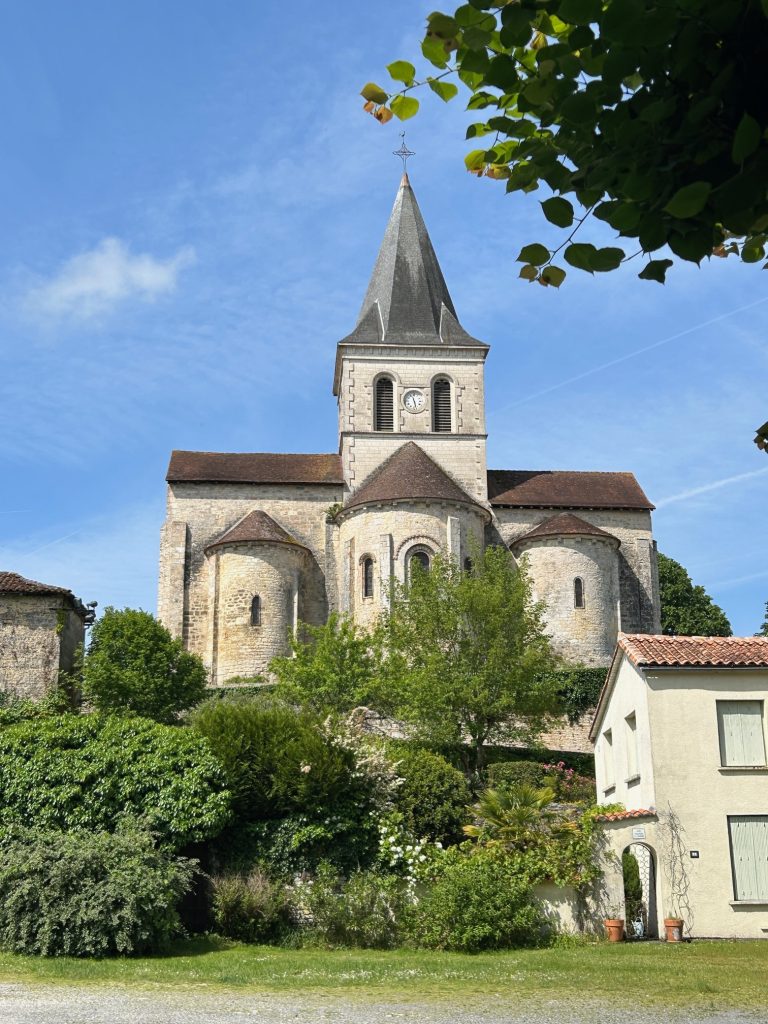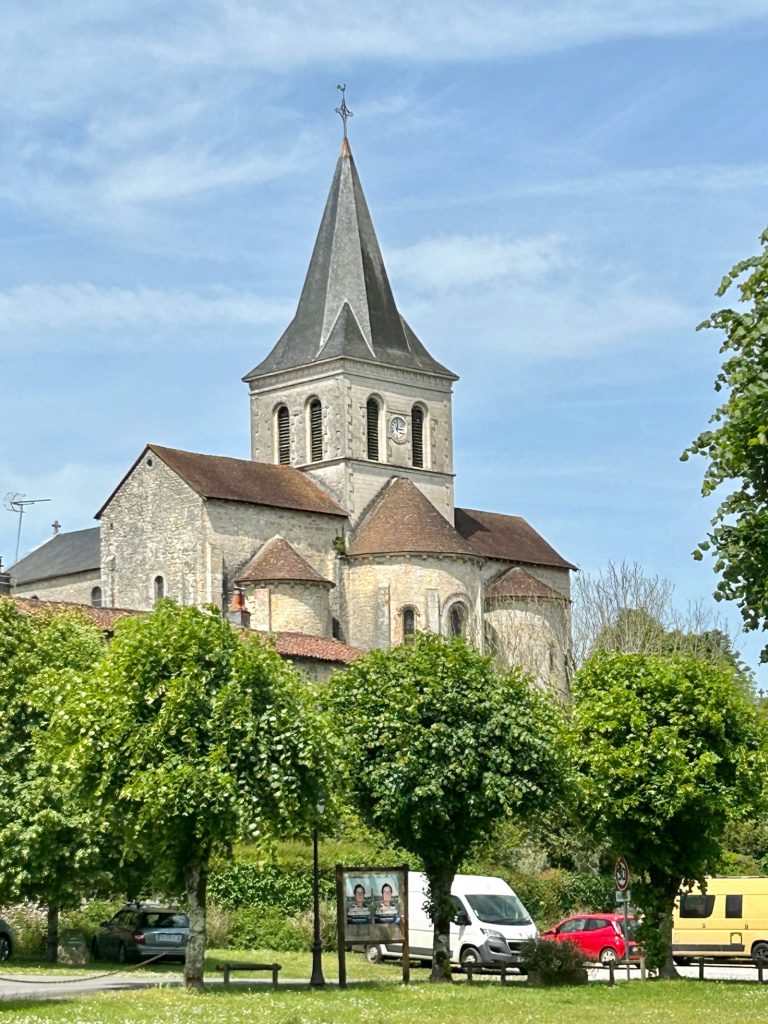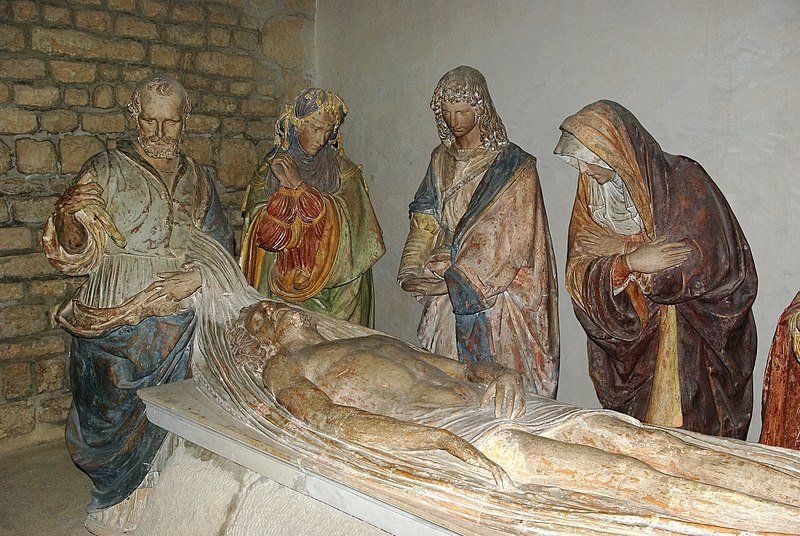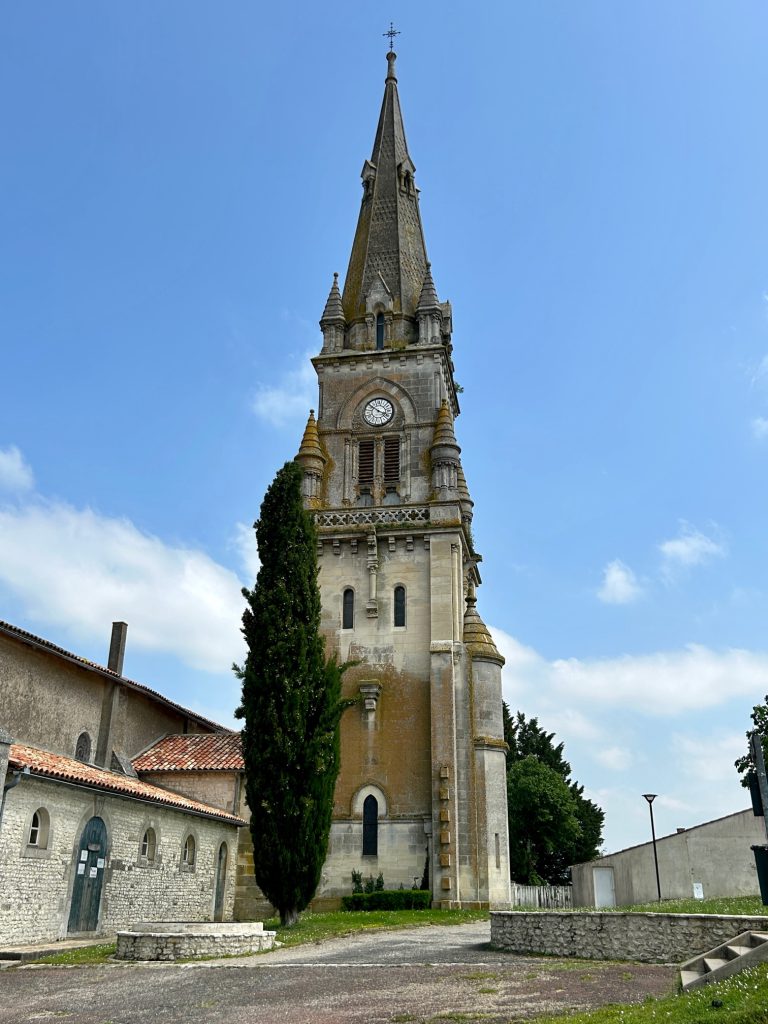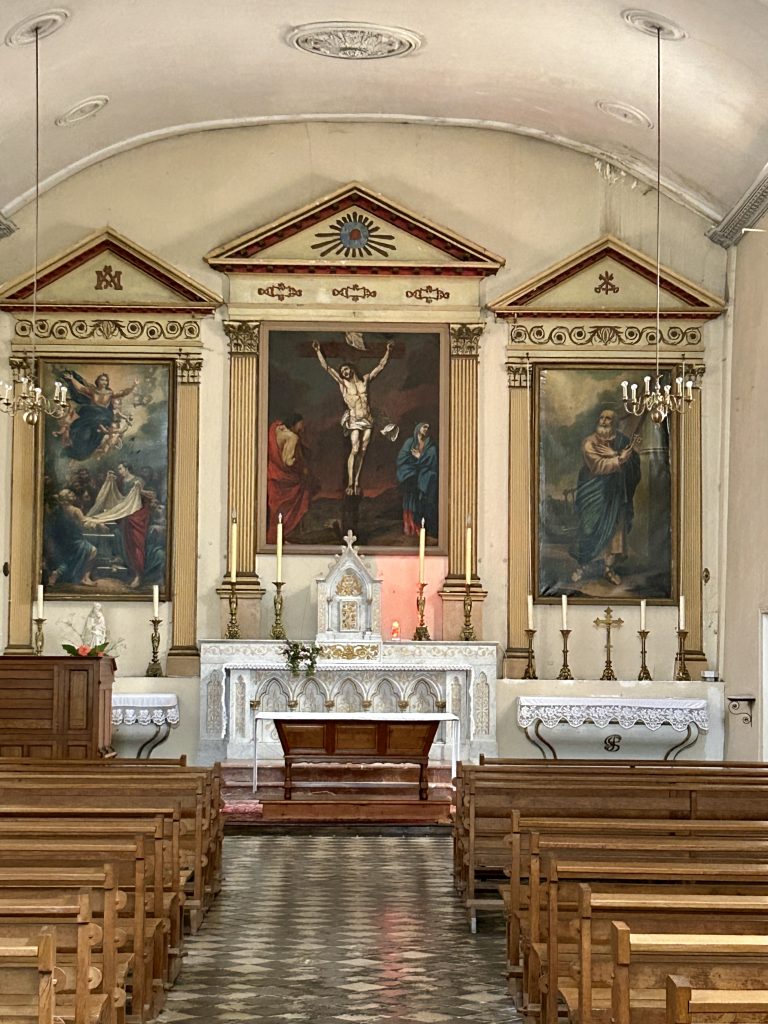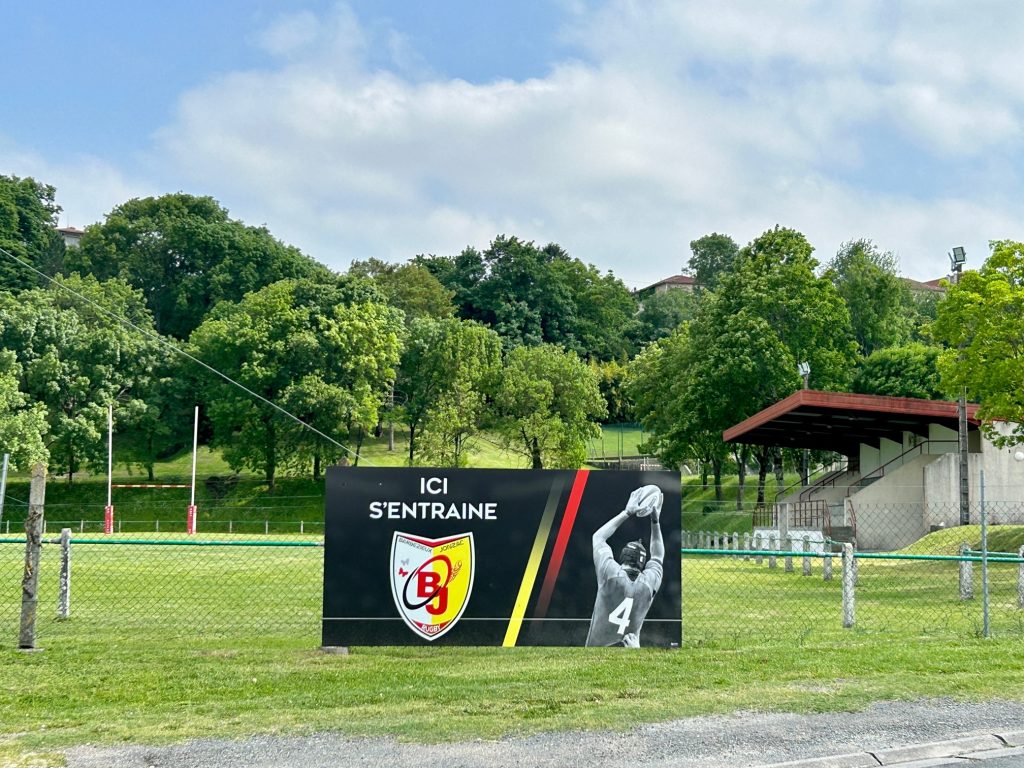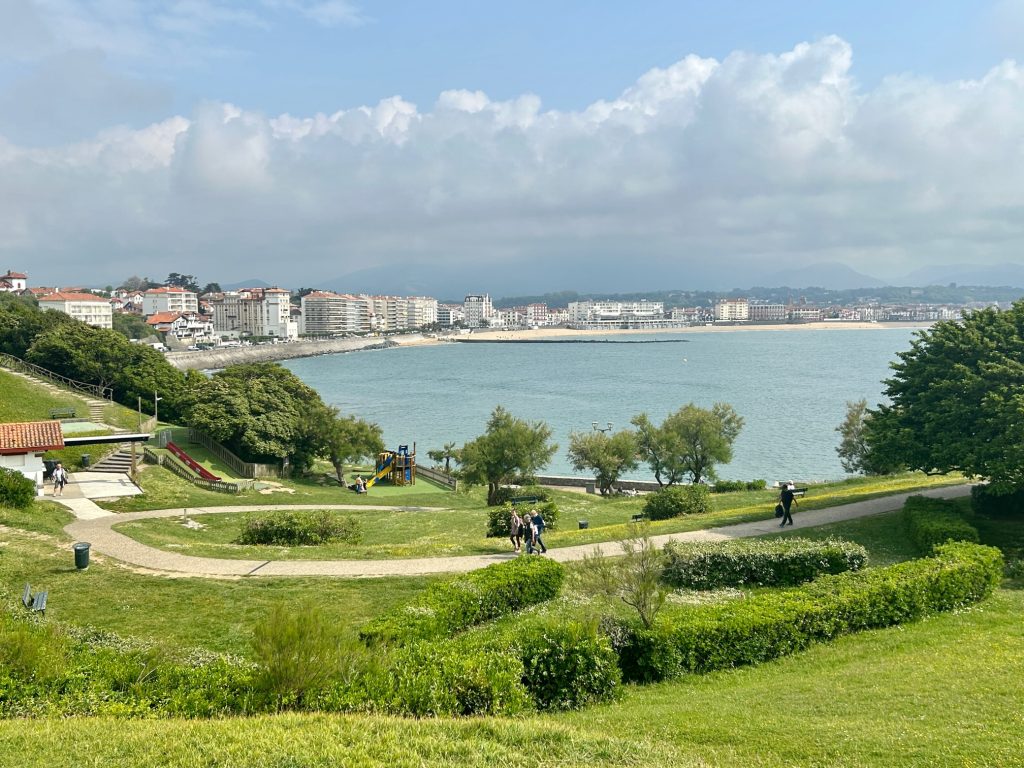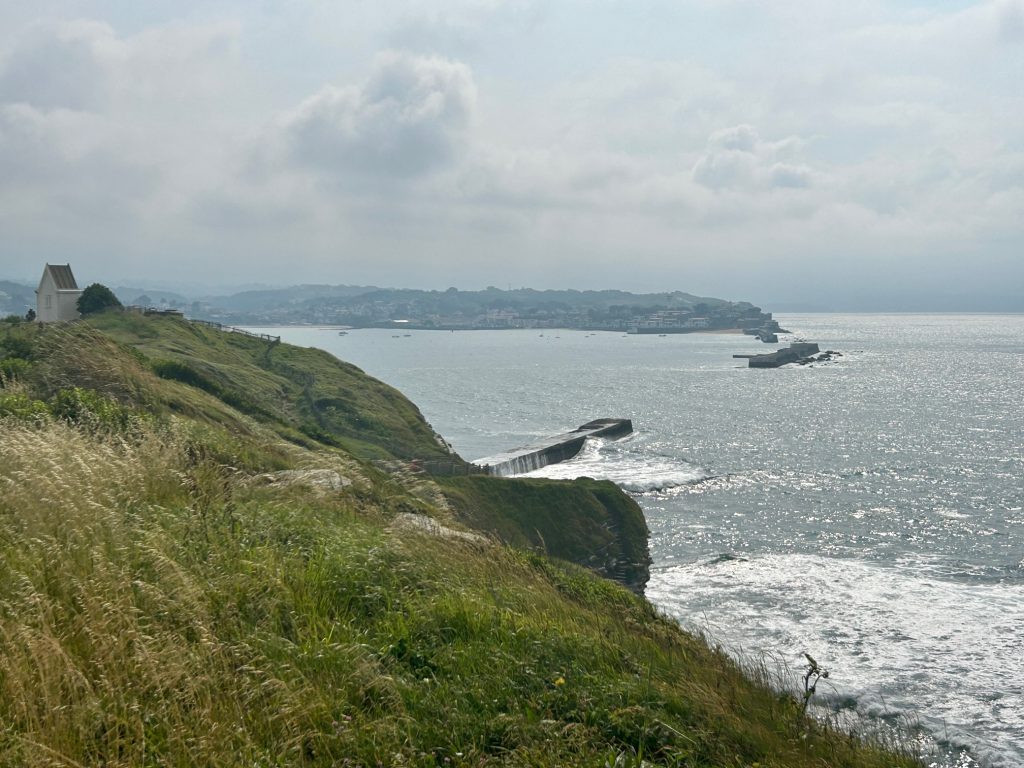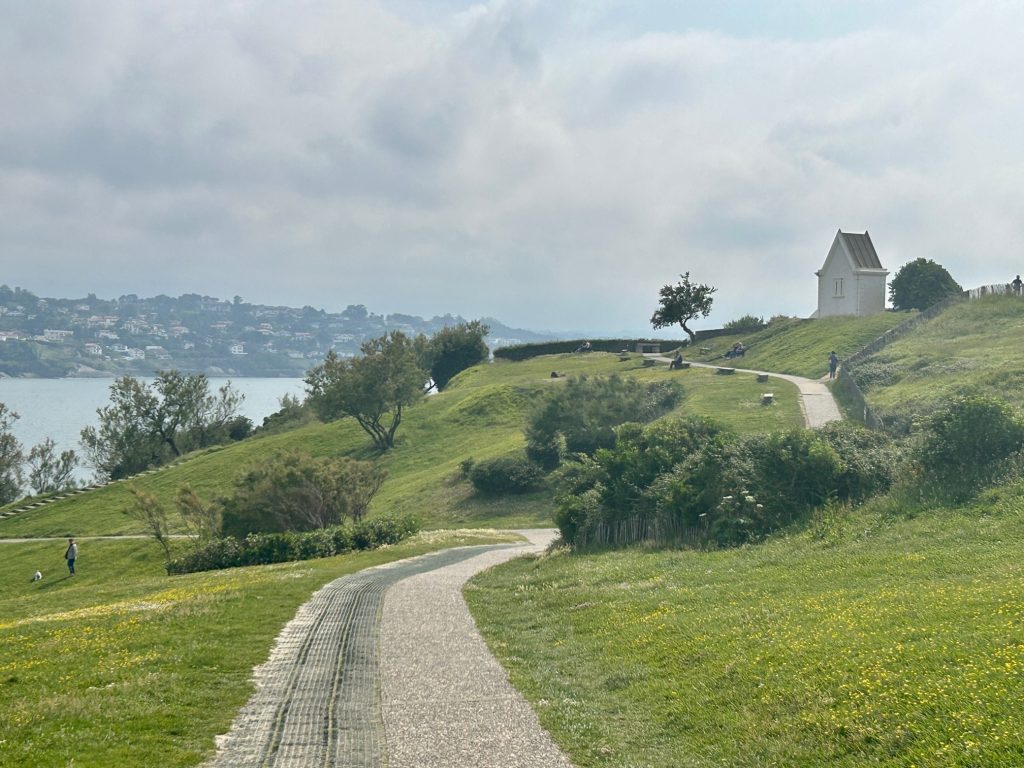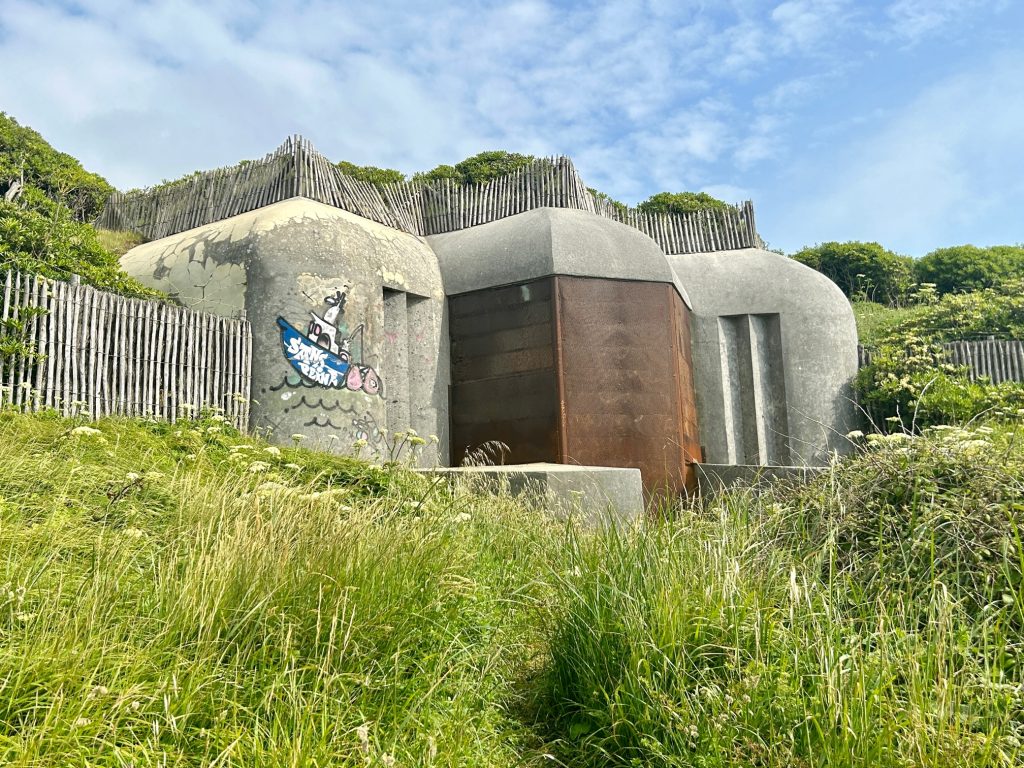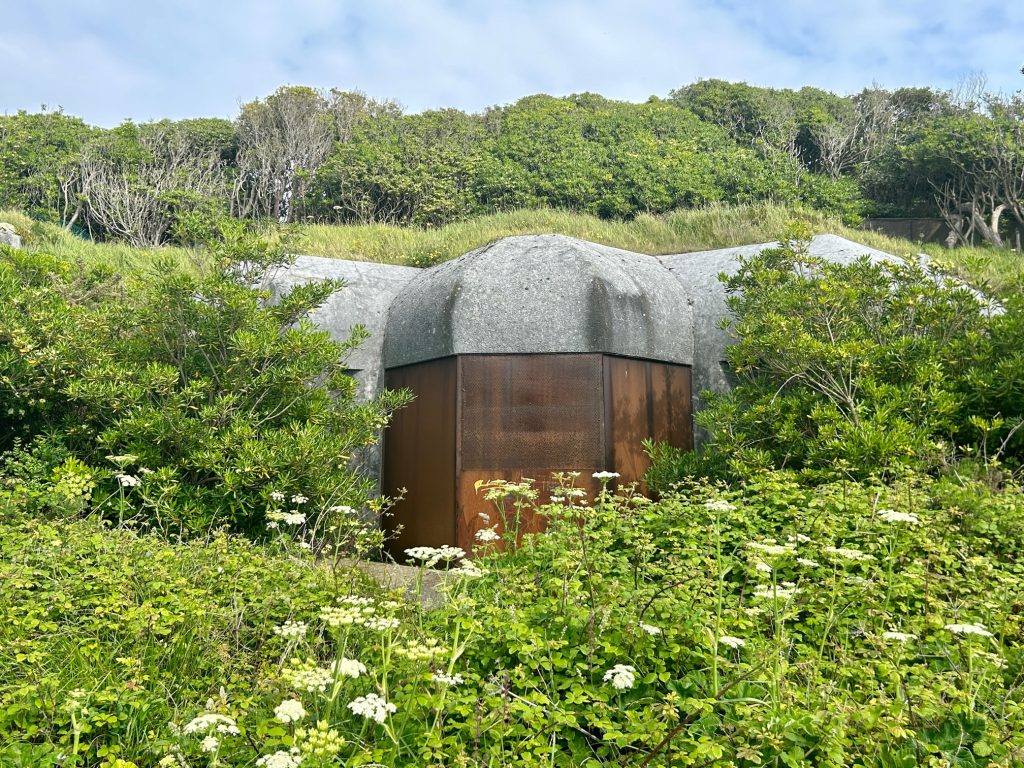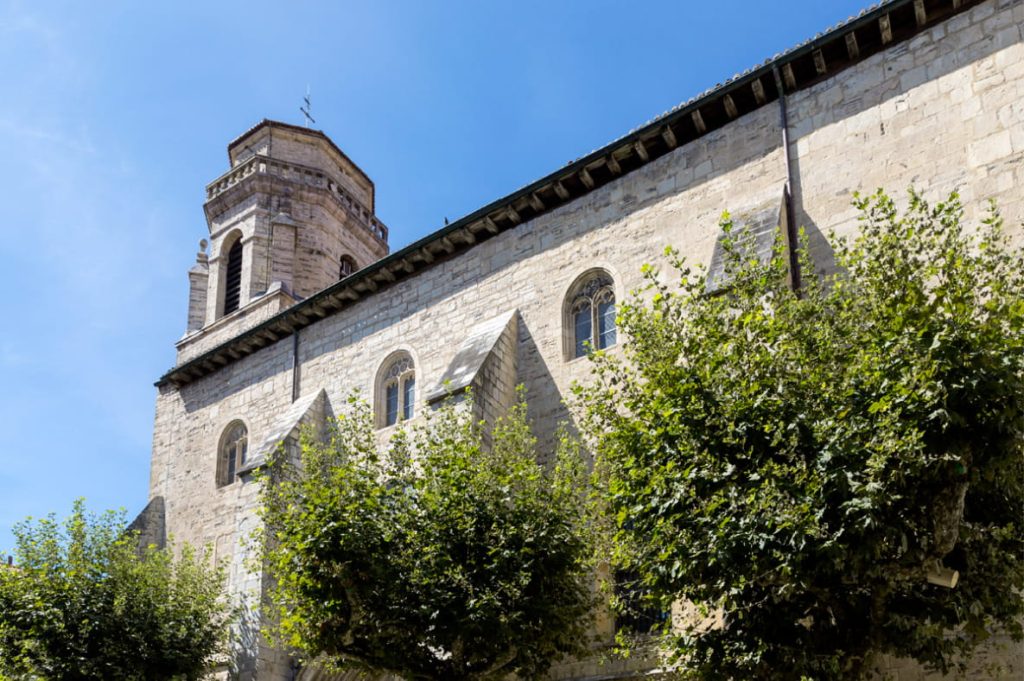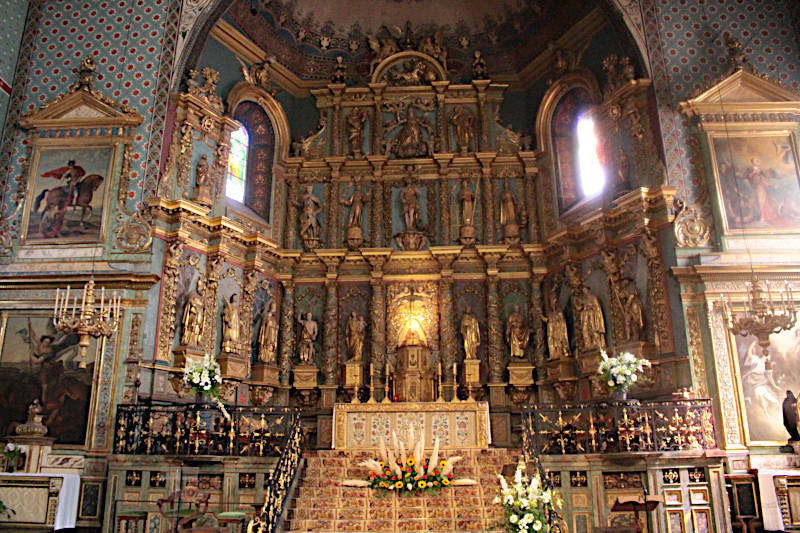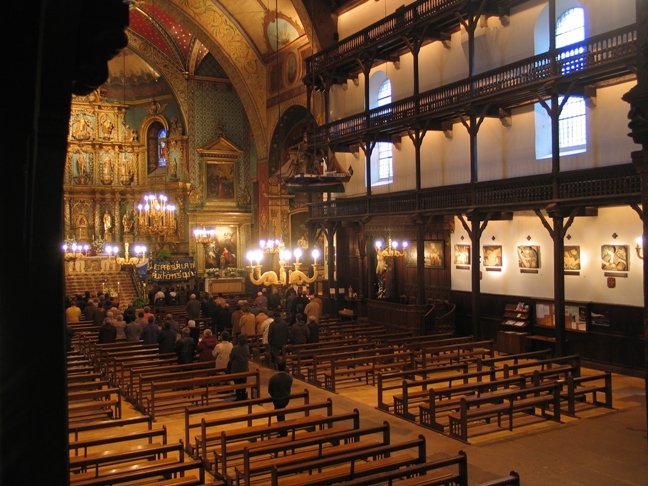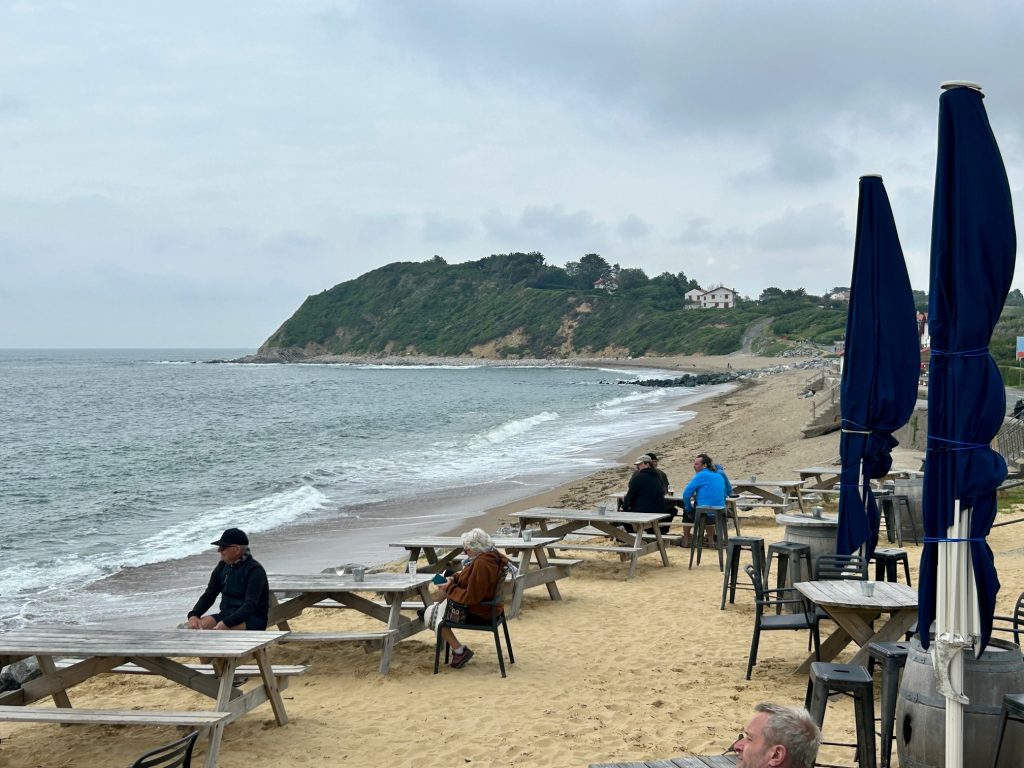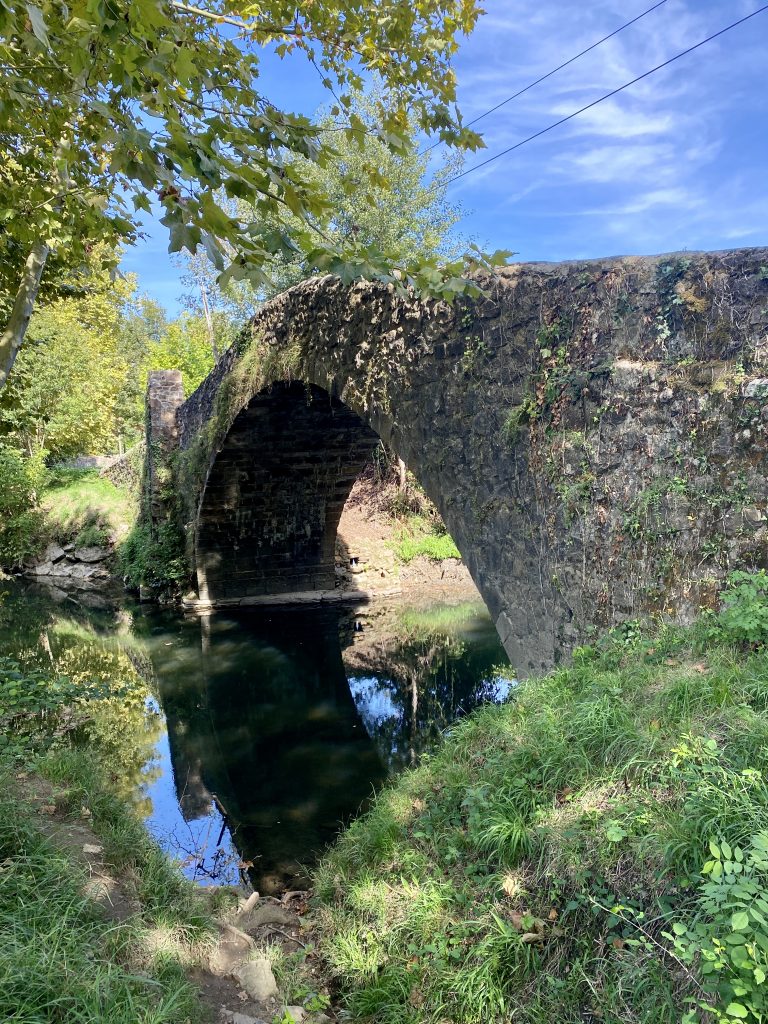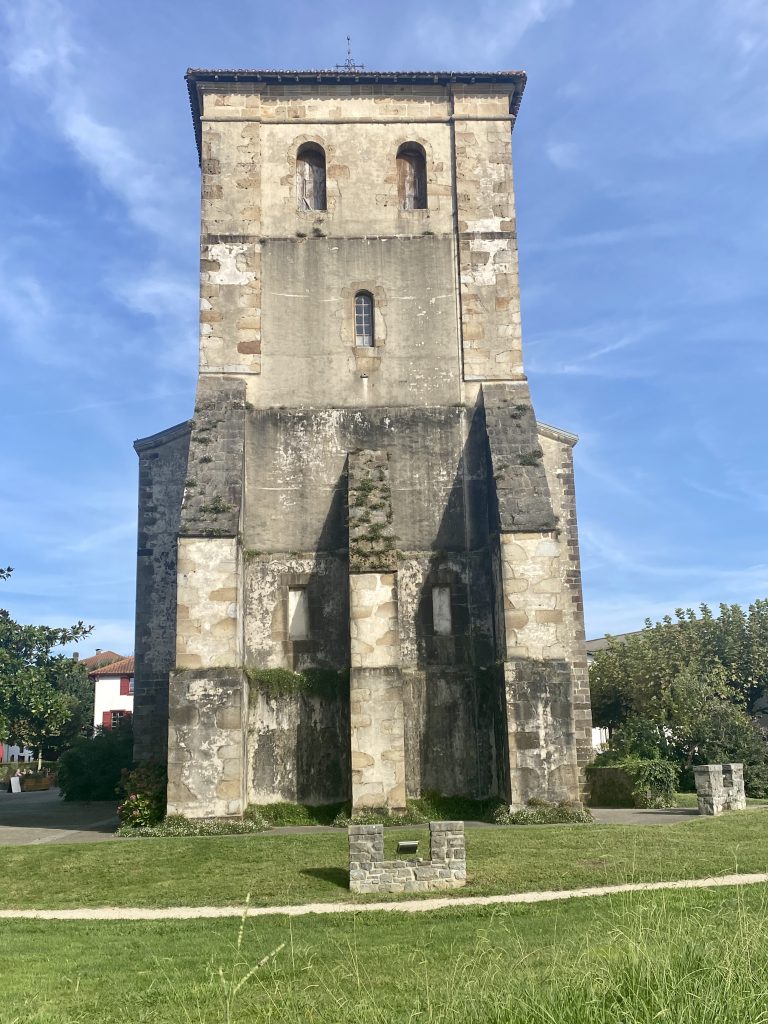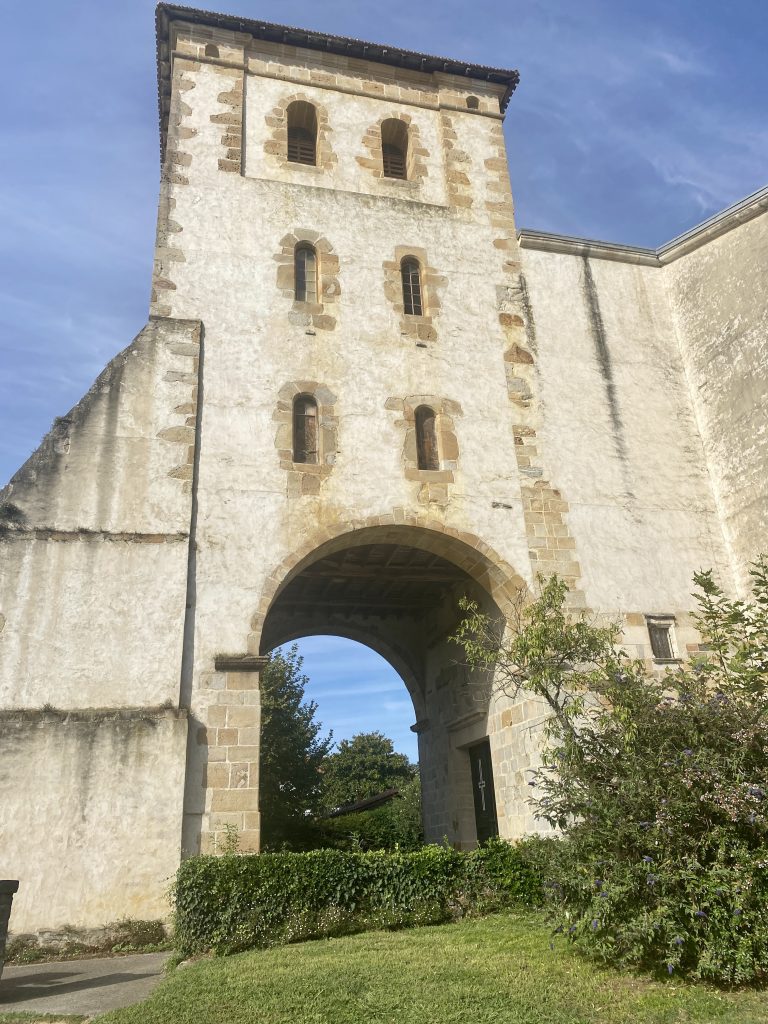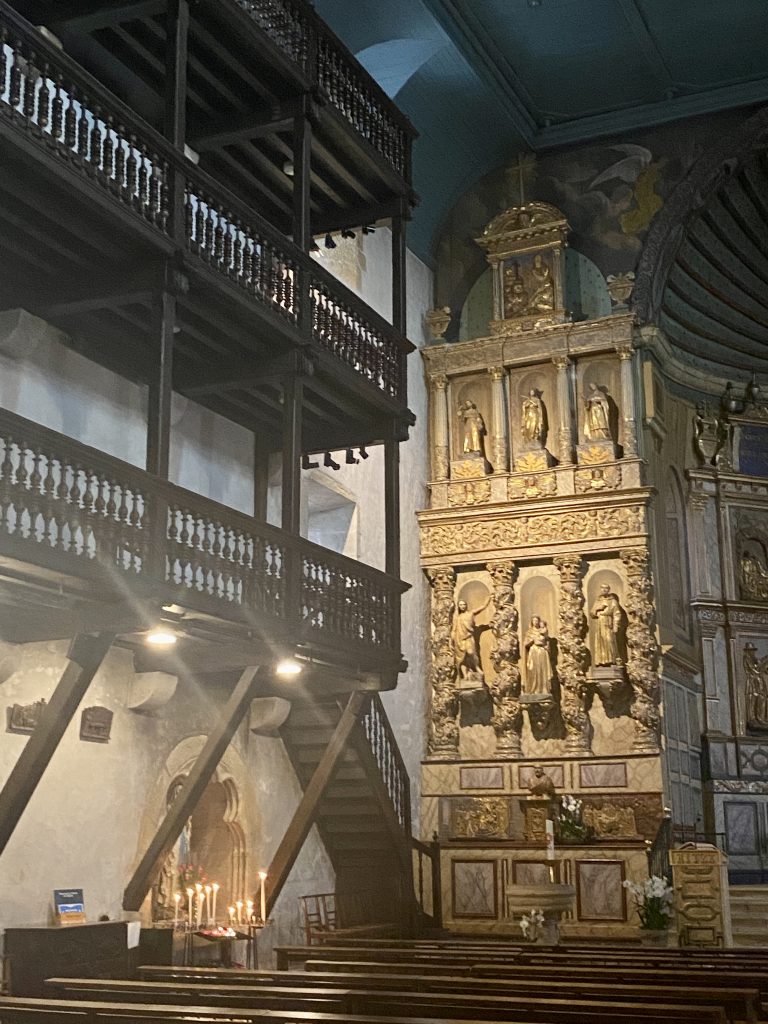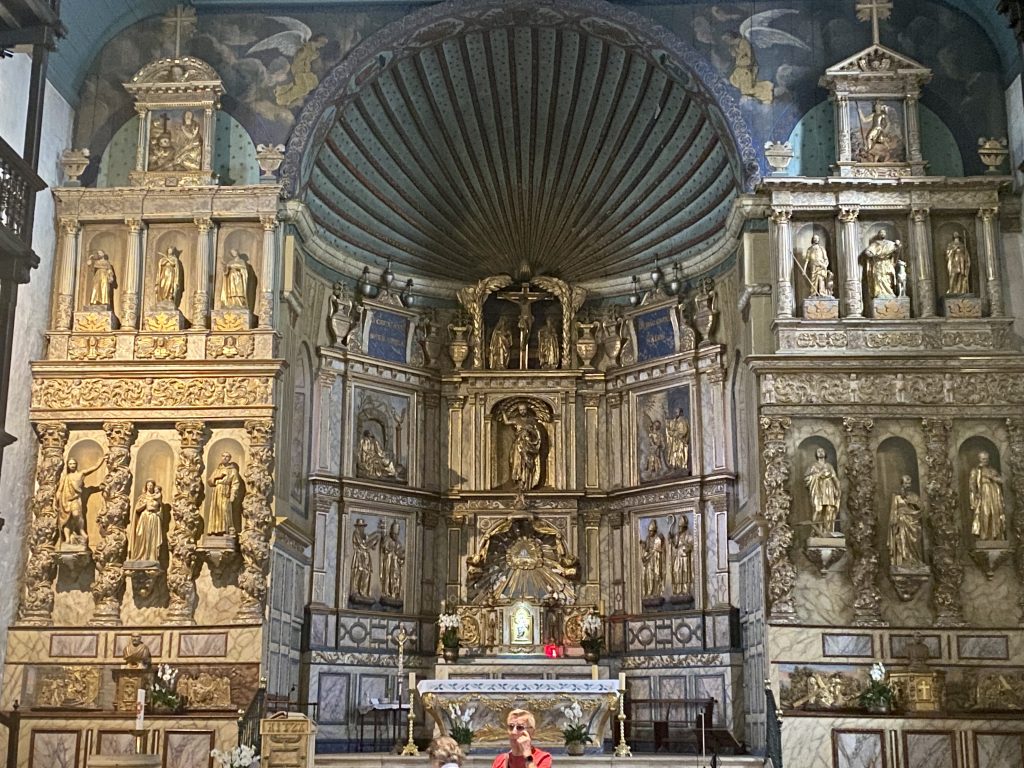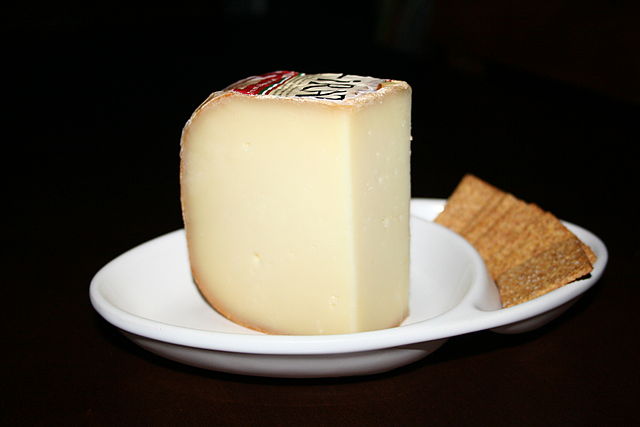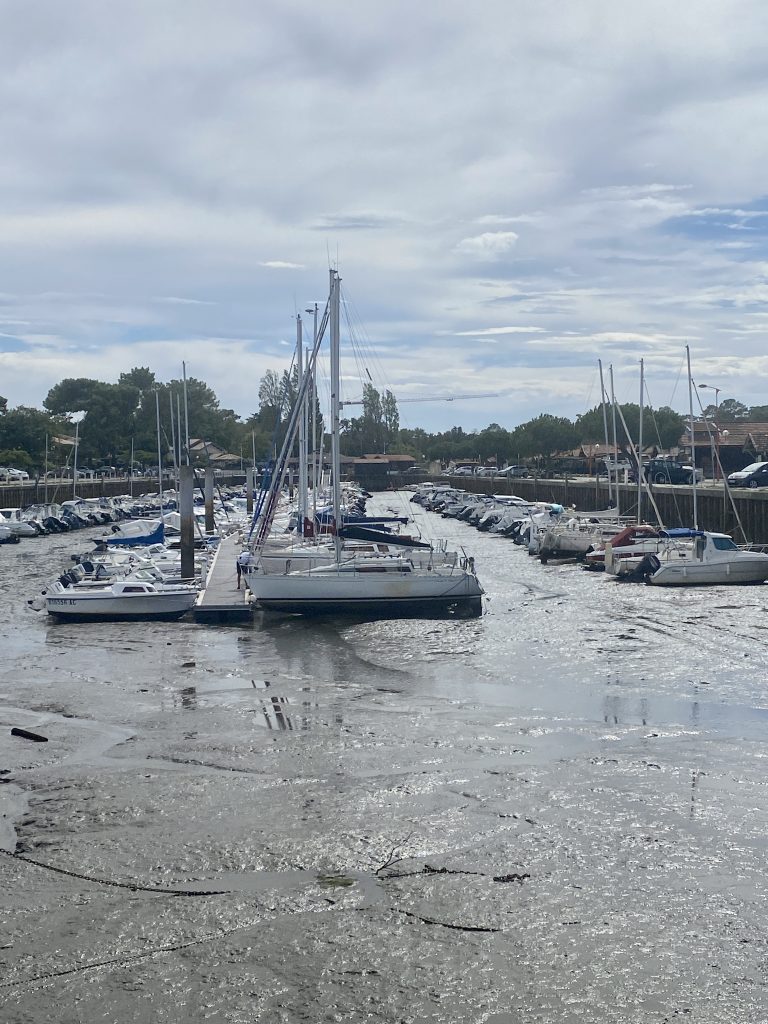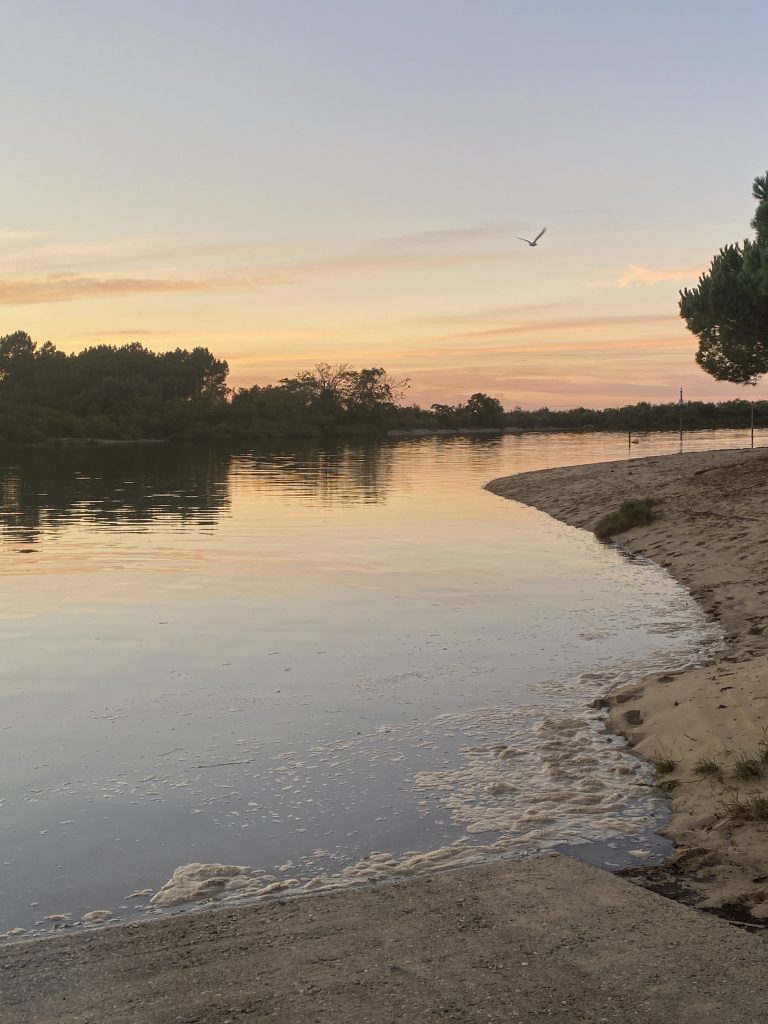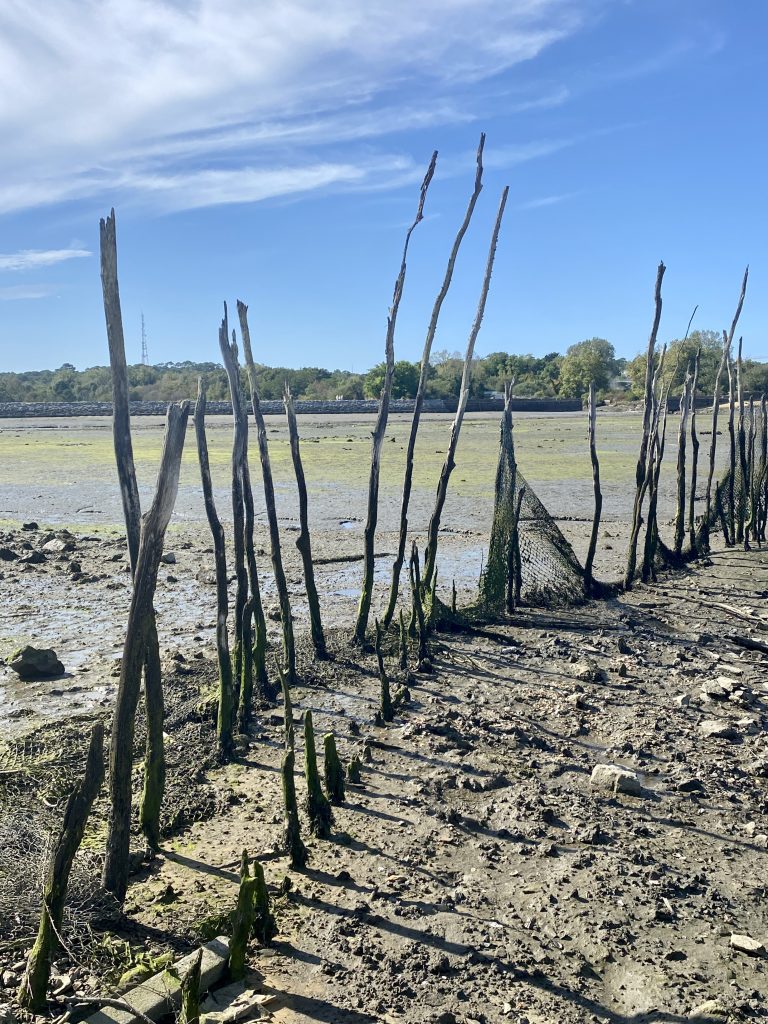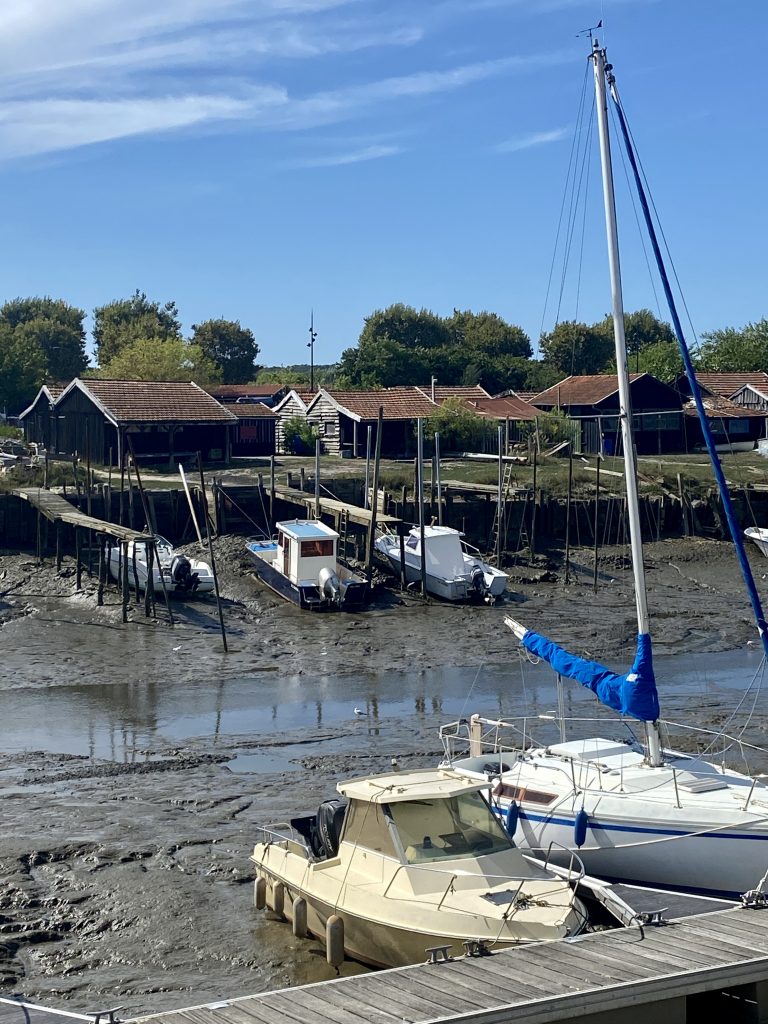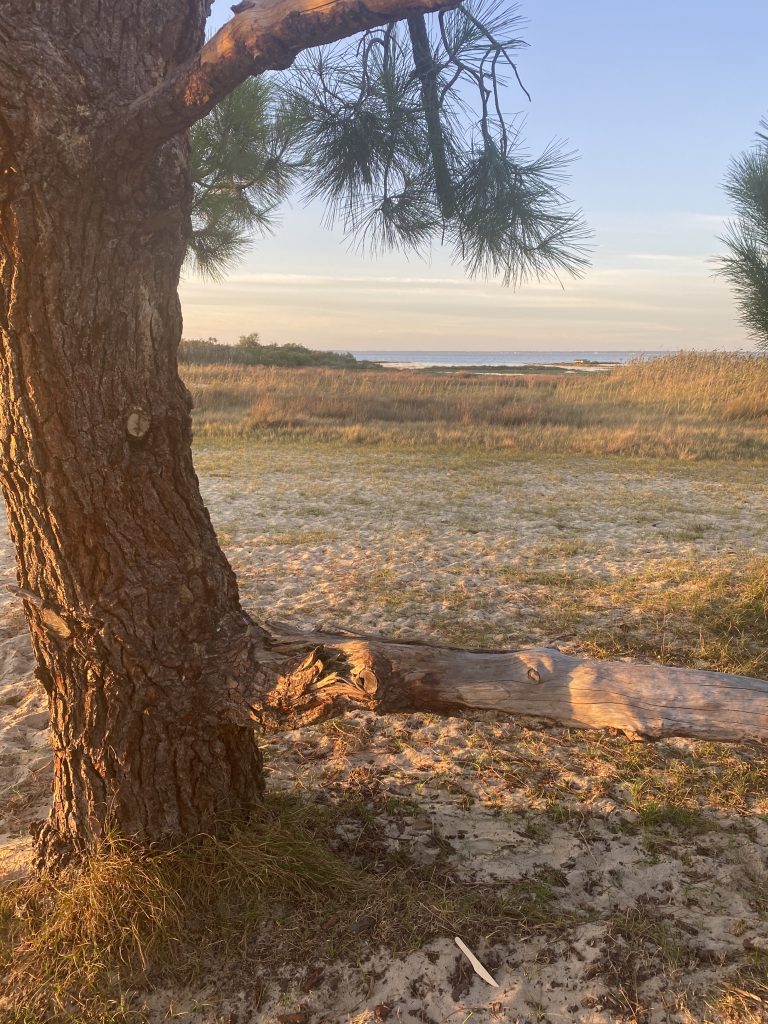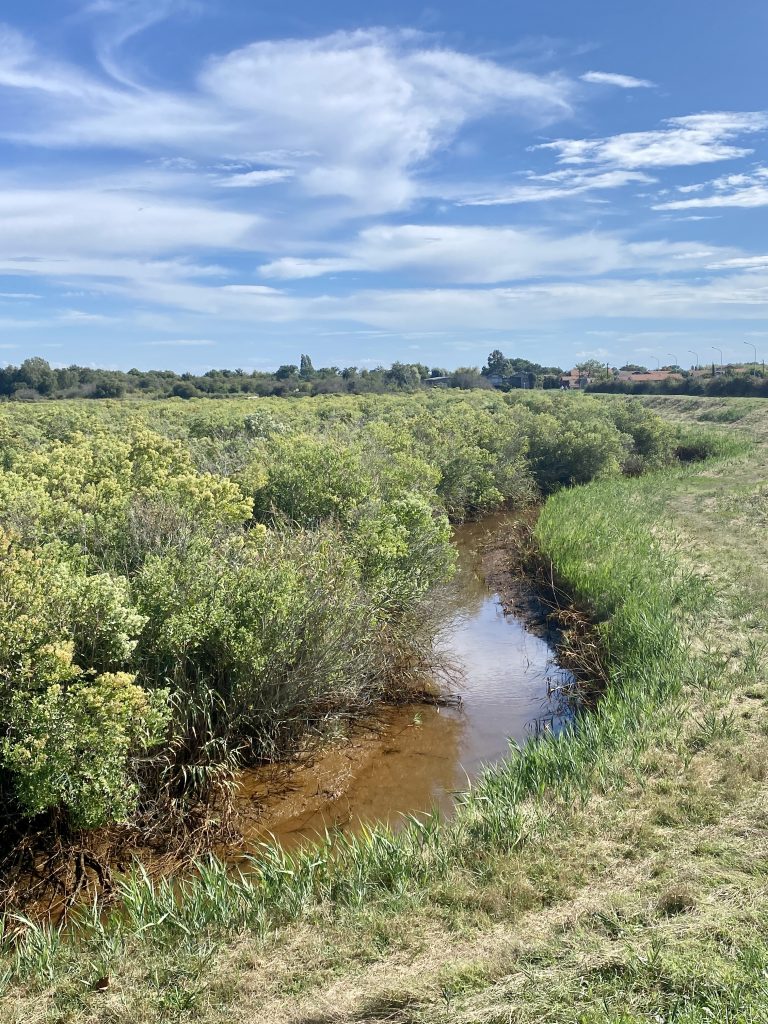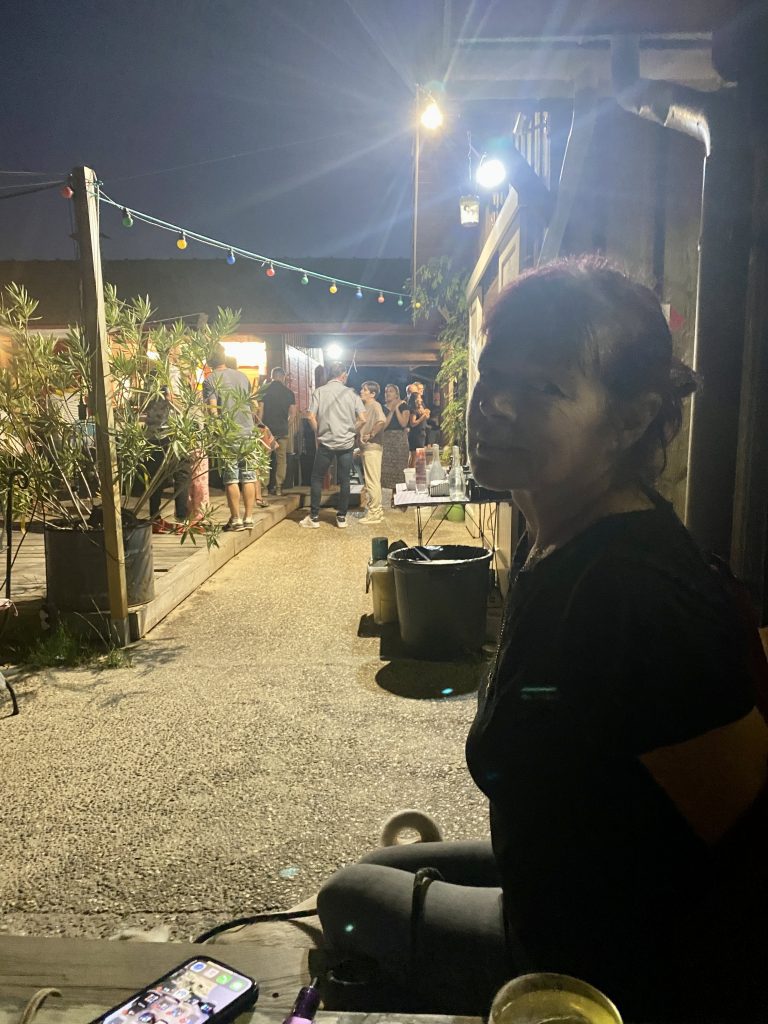We crossed back into France because the weather in Spain was proving so unpredictable. All things being equal, we’ll head for the south of Italy (Puglia) but will stay in the south of France until bad weather once again moves us on.
Not far over the border with Spain in the Pyrenees Atlantiques department of Nouvelle Aquitaine is the small town (less than 2,500 inhabitants) of Urt. It sits on the banks of the Adour River about 15 kilometres east of Bayonne and, for much of the town’s history, it’s principal industry has been large scale salmon fishing from the Adour although; there is evidence too of boat building in the area. Nowadays, with salmon levels reducing, Urt is busy rebranding itself with a primary focus towards tourism and, particularly, angling and hiking opportunities in the area.
We chose to stay at a small but very comfortable camping site, Camping Ferme des 4 Chenes, which is just short walk from the town centre. Vanya wanted to give Nala a rest day and offered to stay with the dogs (and work on her tan) while I set off to explore the town.
Urt is not a big town and doesn’t require much more than an afternoon to properly explore (and that includes the 4 mile walk to Belloc Abbey, assuming you are interested in a working Benedictine Monastery). For my part, the town’s most interesting feature is it’s church, Our Lady of the Assumption of Urt. There’s been a church by this name in Urt since at least the 11th or 12th century but this building was constructed as recently as 1675 in the typically Pays de Basque style (white walls and timber frame with large wooden galleries inside) which I adore. Despite it’s relatively small size it has so many arresting attributes and, principal amongst these, are the impressive baptismal font, some wonderful stained glass windows by Charles Carrere (not all of them religious) and there’s a votive ship suspended from the ceiling in the nave (dating back to the late 19th century) which is, presumably, a nod to the town’s shipbuilding past. Most unusual is the church organ behind the altar. These Basque style churches really are something else.
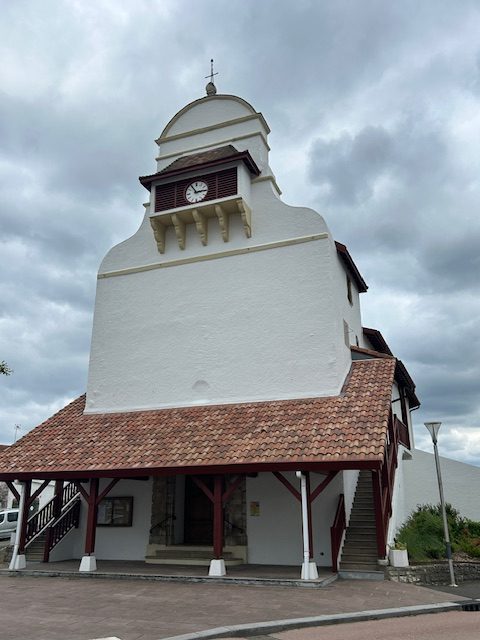



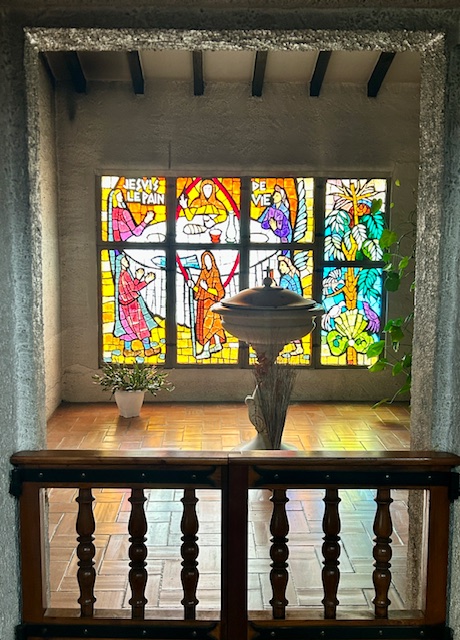

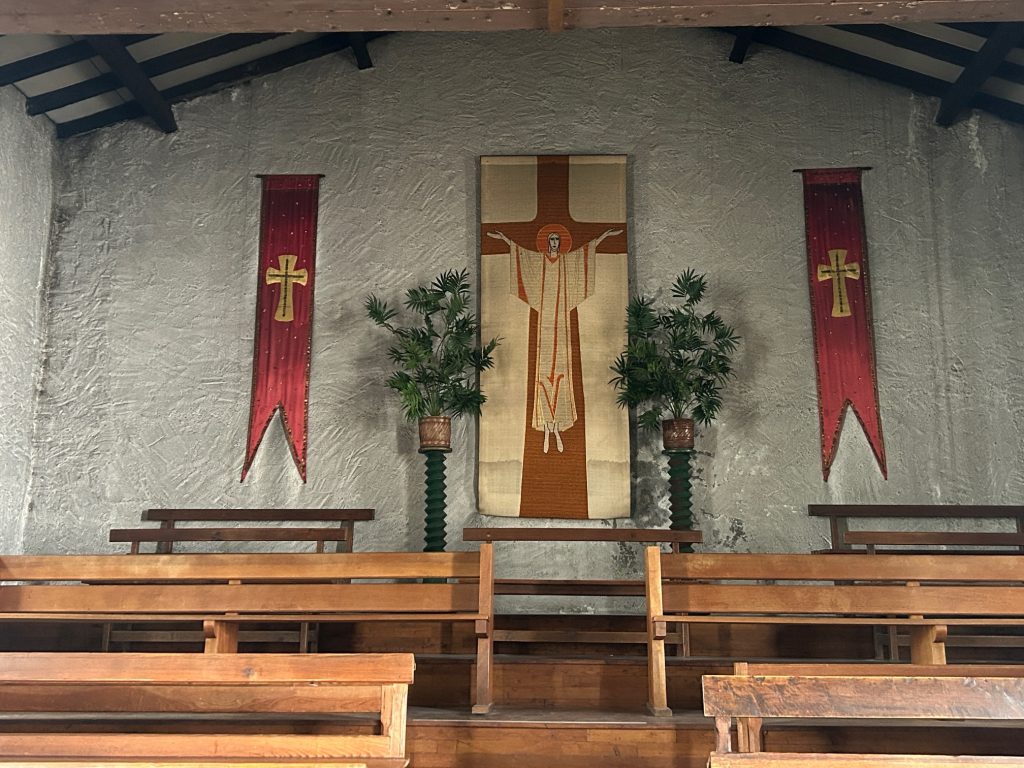
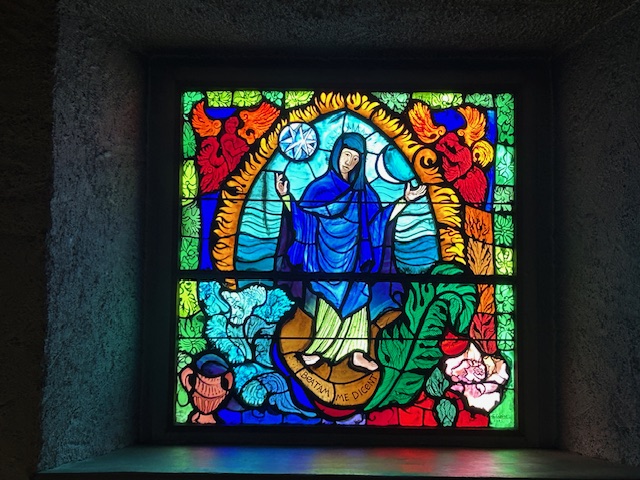
Another salute to the town’s Basque heritage is to be found in Castet’s Park where a pelota court was built in 1929. Seeing it reminded me of our stay in Ascain a few tours ago when I stopped to watch part of a pelota tournament. By the way, the Castet Park offers a route down to the Adour River and is worth walking through if only to see the old washhouse which was fully restored by volunteers from the village.

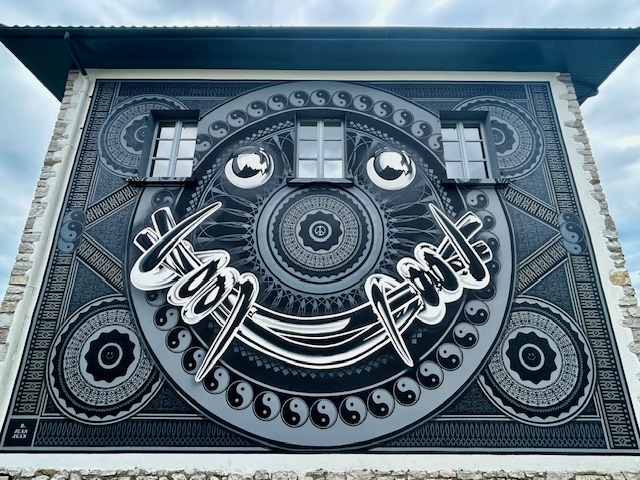
There’s little left down by the river to remind you of the town’s fishing heritage except perhaps the Auberge de La Galupe. More than 300 years old this building on the towpath served as an inn for the town’s fishermen and, of course, bargemen travelling the river. It later became a restaurant and was owned and operated for more than 30 years by one of Urt’s most favourite sons, Christian Parra. He won two Michelin Stars during that time and was famous for, amongst other things, his black pudding, tuna belly and local salmon creations before retiring in 2002. The restaurant is now operated by Stephane Besse and remains a renowned restaurant but is closed on Monday and Tuesday (isn’t everything in France?) or I would have tried to reserve a table. Shame, because the taster menu looks so very exciting and fairly priced.
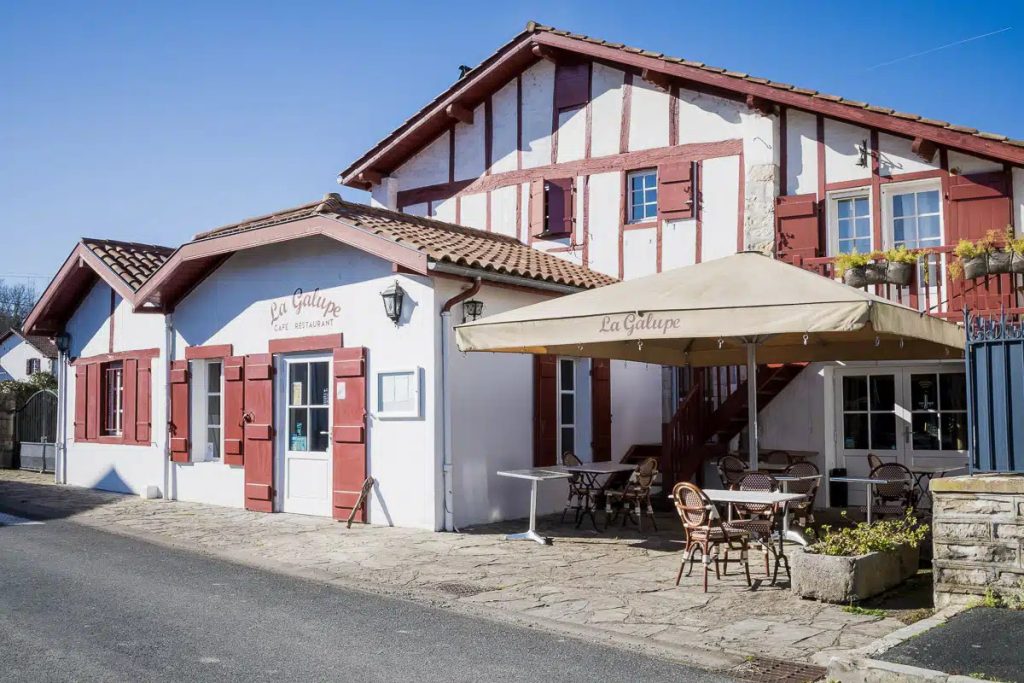
There are a couple of other restaurants in the town, a bar and a few shops (including a reasonaby well stocked mini-market) but nearby Belloc Abbey and it’s Benedictine Monastery called. The community comprises some 40 monks who support themselves by offering overnight accommodation (for those who seek peace and quiet for a period) and through the production and sale of a traditionally produced, semi-hard sheep’s cheese known simply as Abbaye de Belloc. The taste of the cheese is not unlike burnt caramel and it pairs well with a range of red, white and rose wines. It is recommended however that the cheese be complemented by crackers (to produce a crunchy element which goes with the creamy texture of the cheese) or honey (to add a touch of sweetness) or olives (which provides a salty and/or briny flavour which pairs well with the cheese and creates a well balanced bite). Who am I to argue with that? It appears a very successful little business.


Next stop is Lourdes by way of Peyrehorade (and it’s farmers market).

